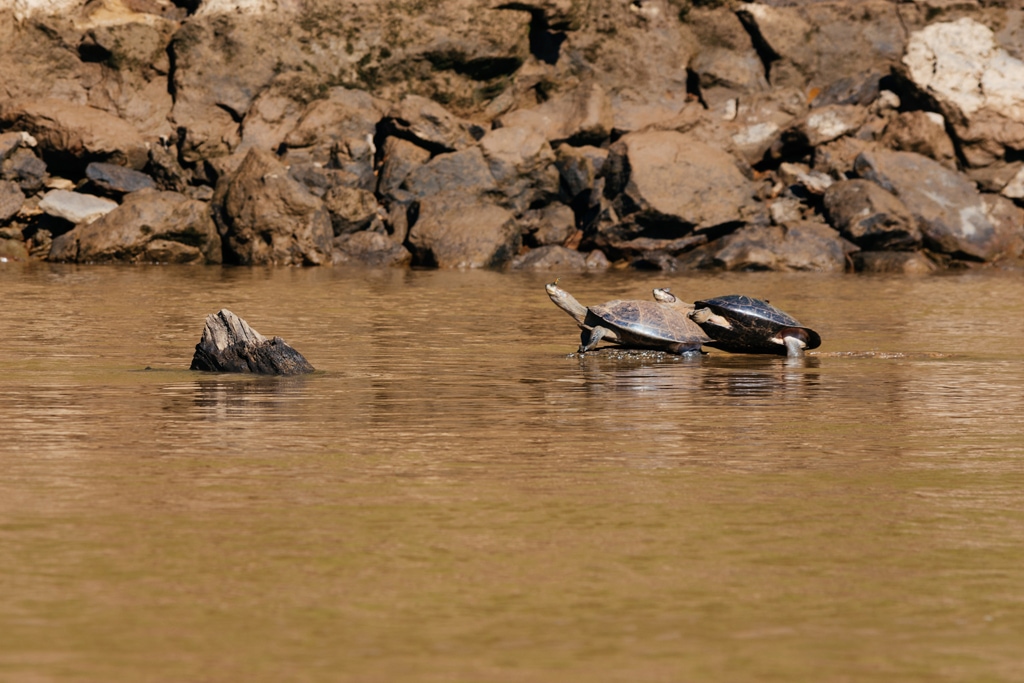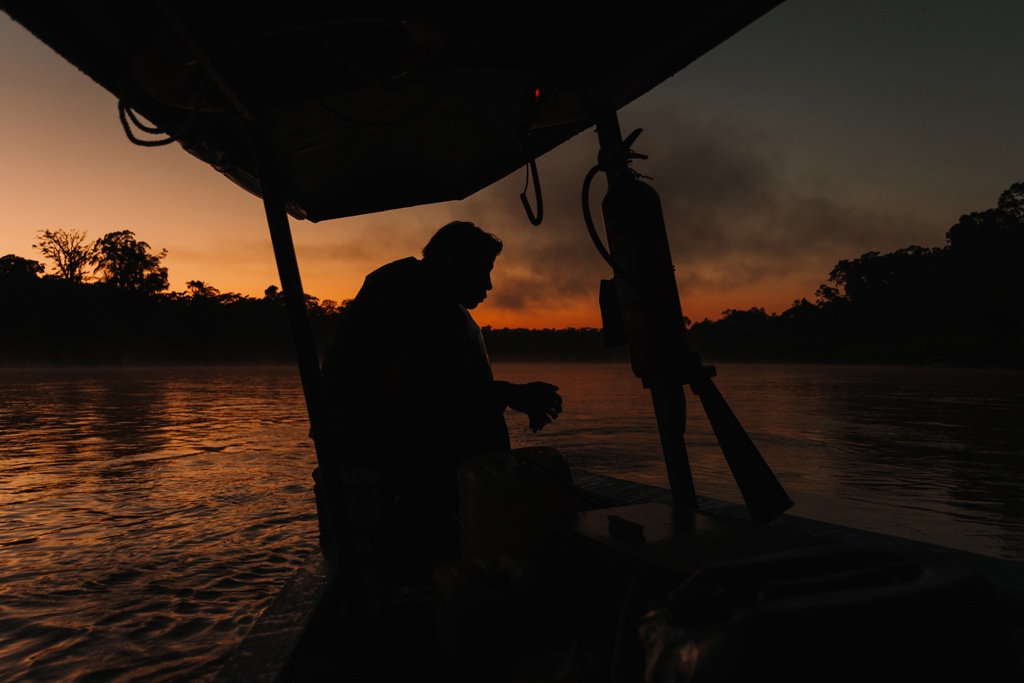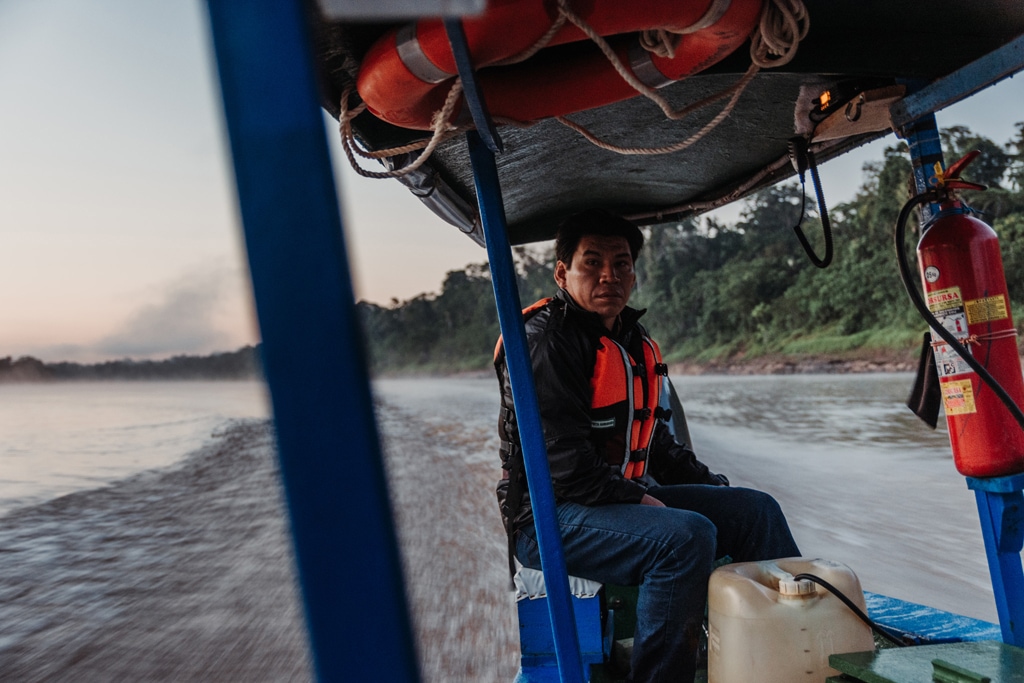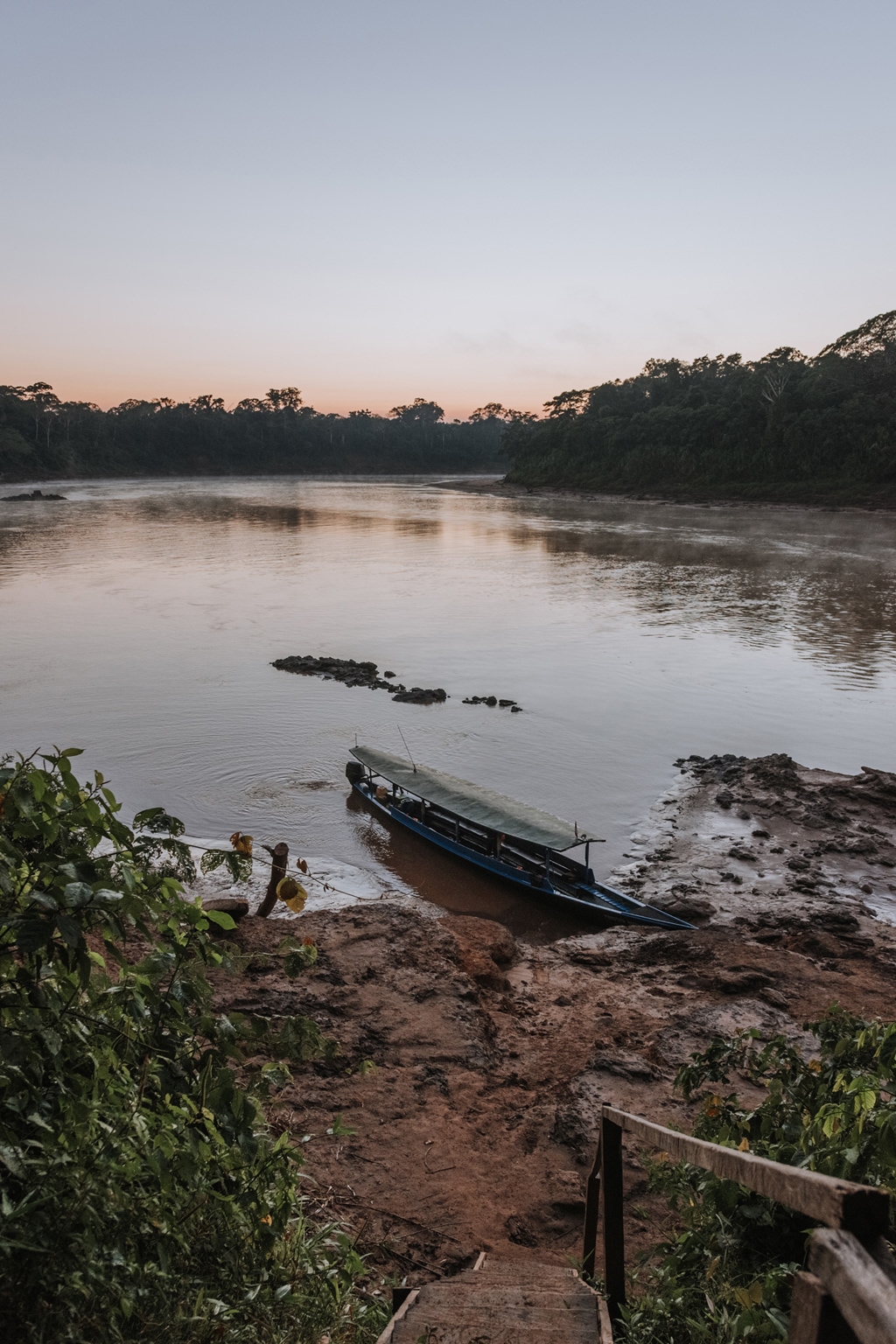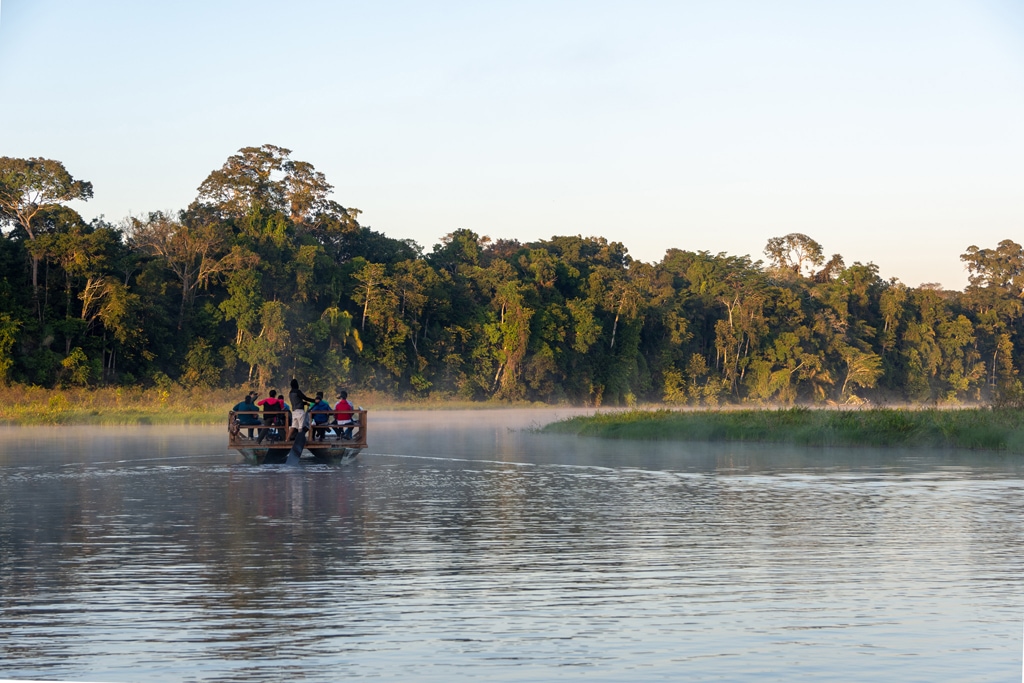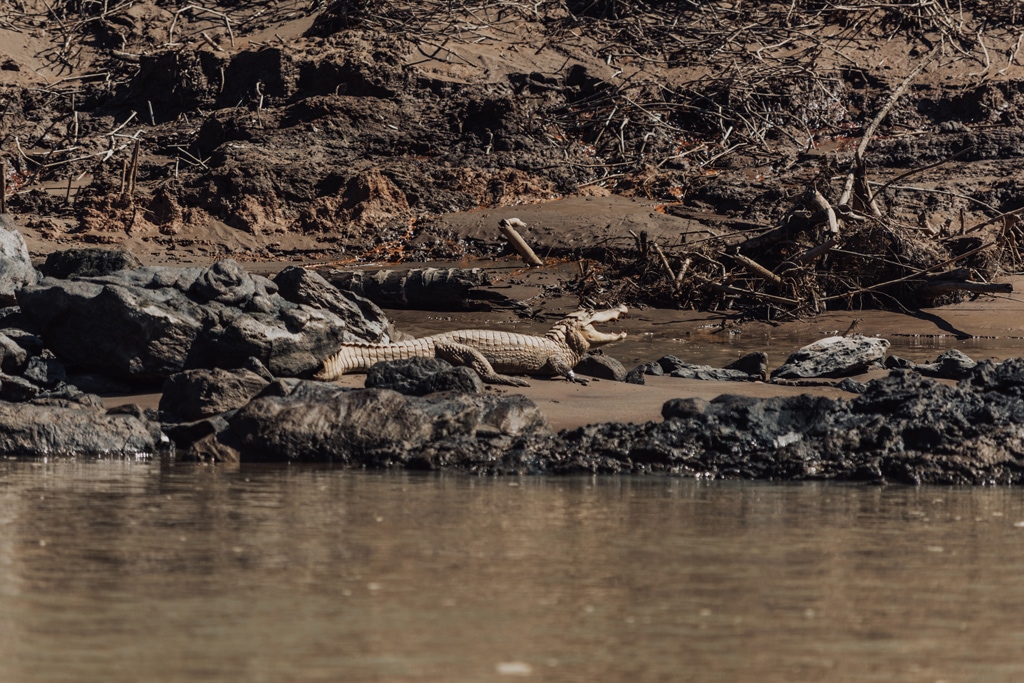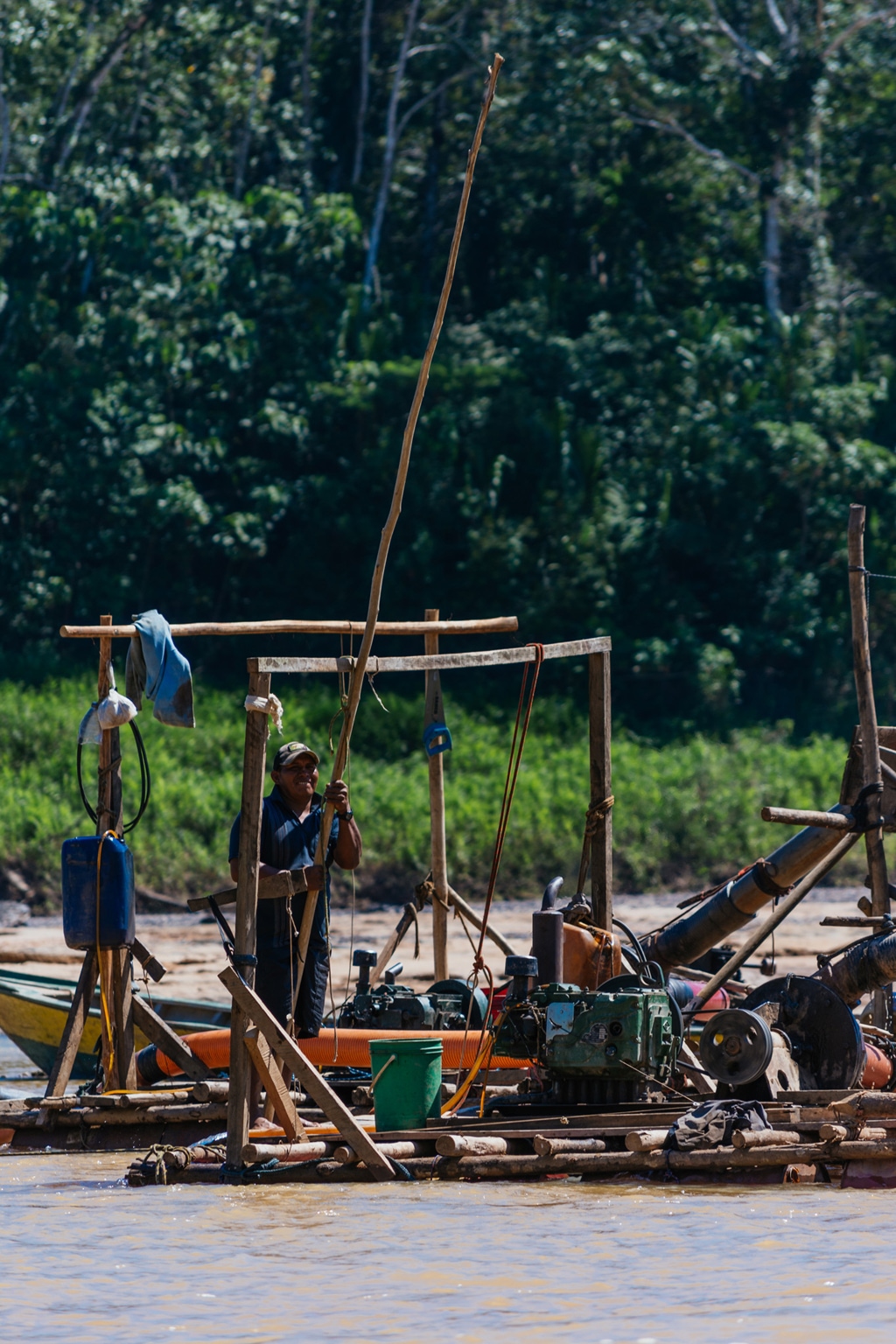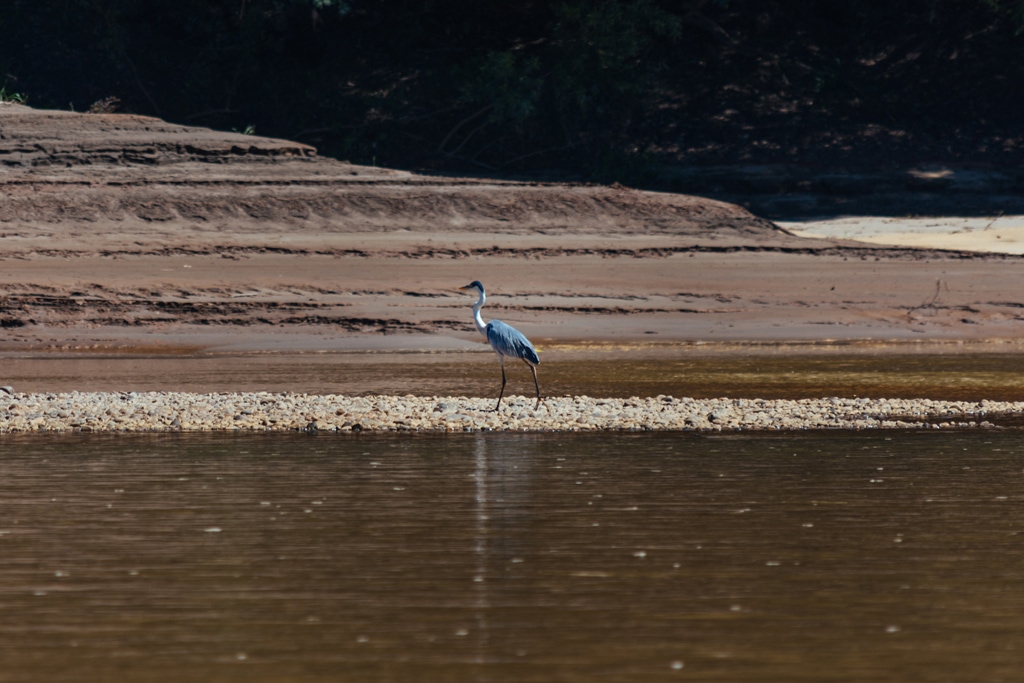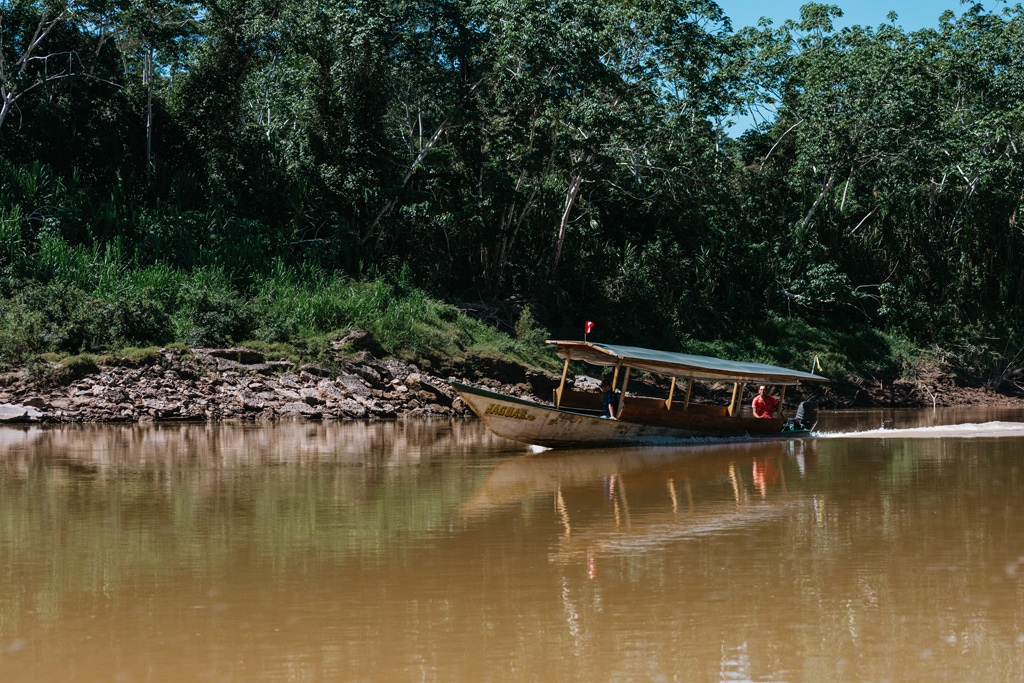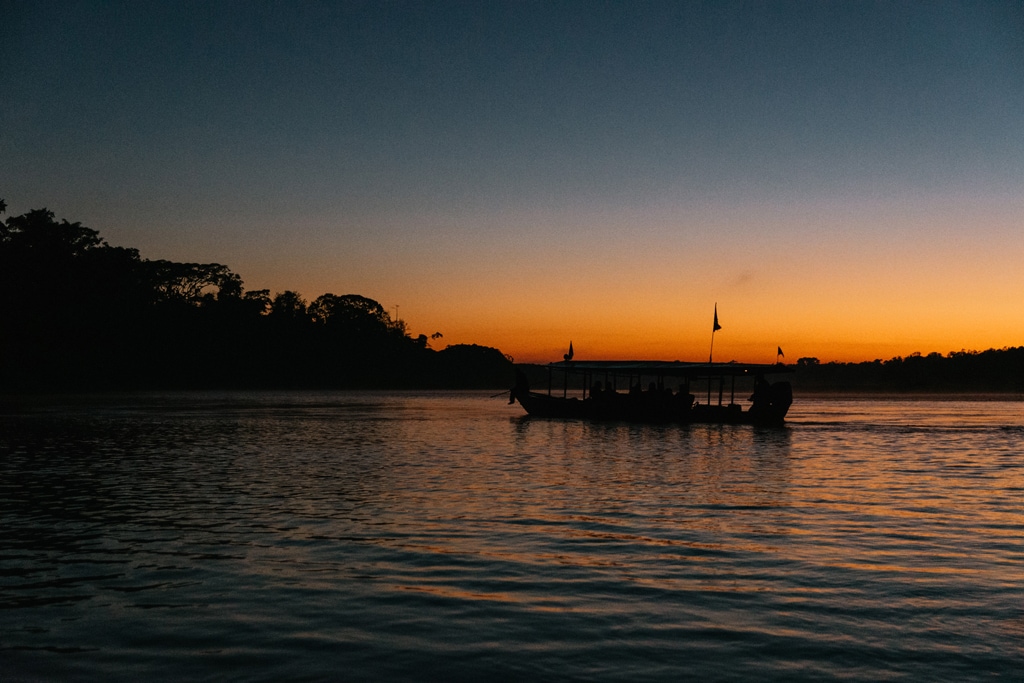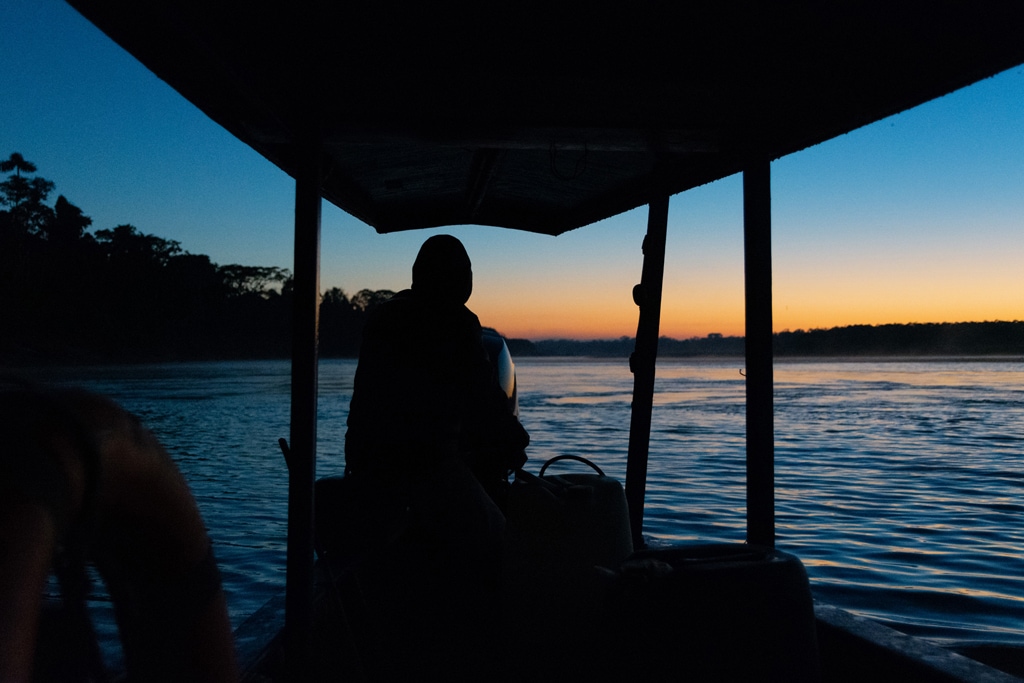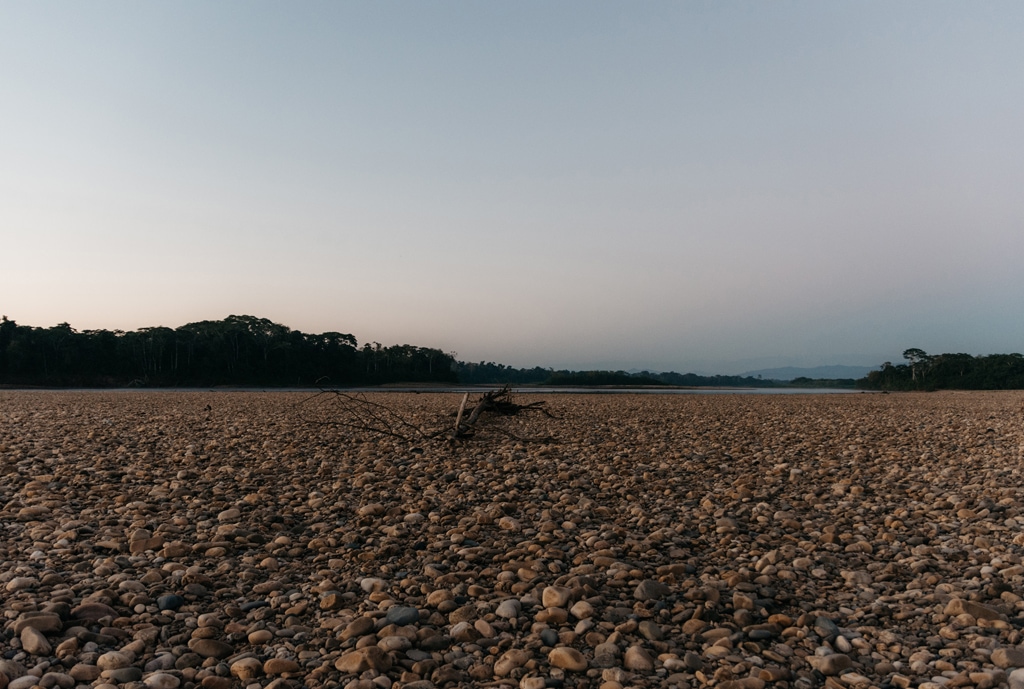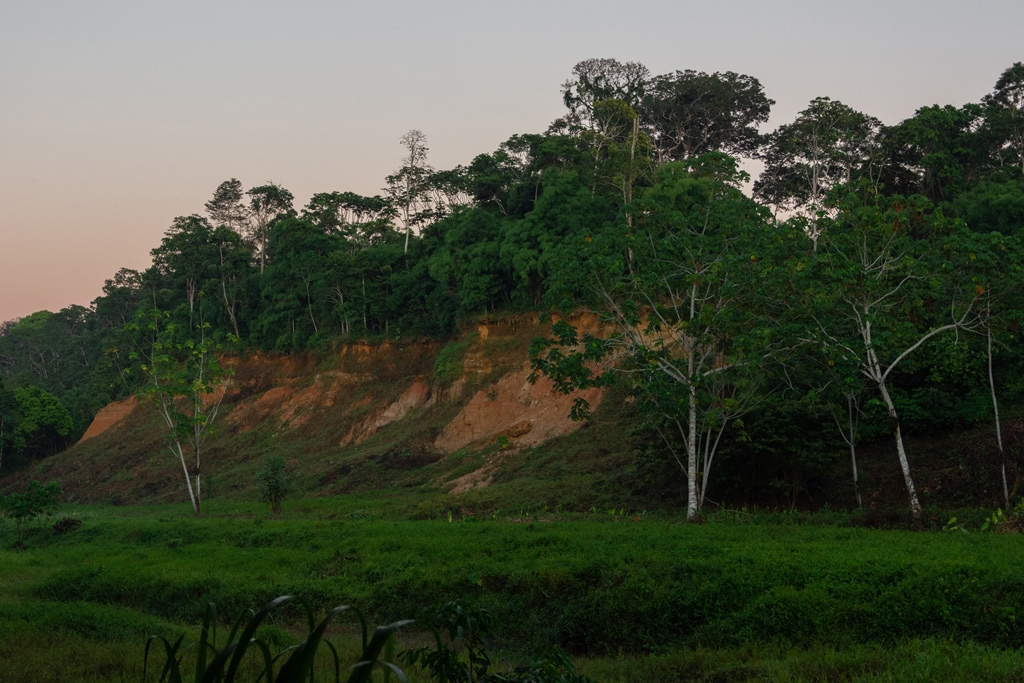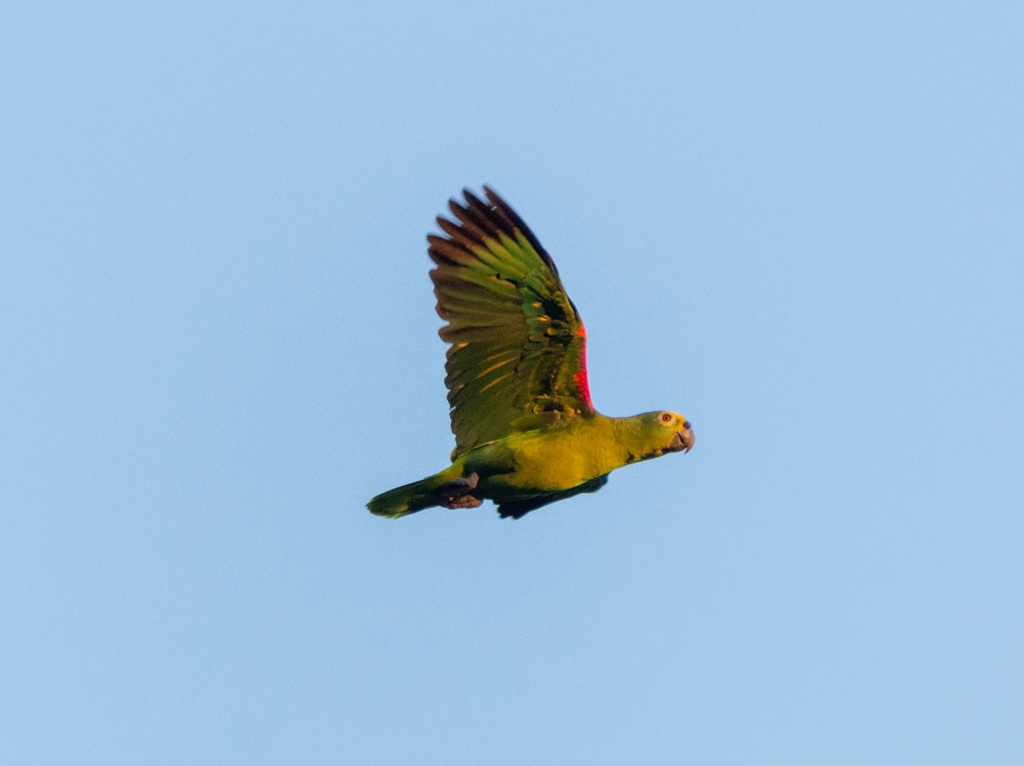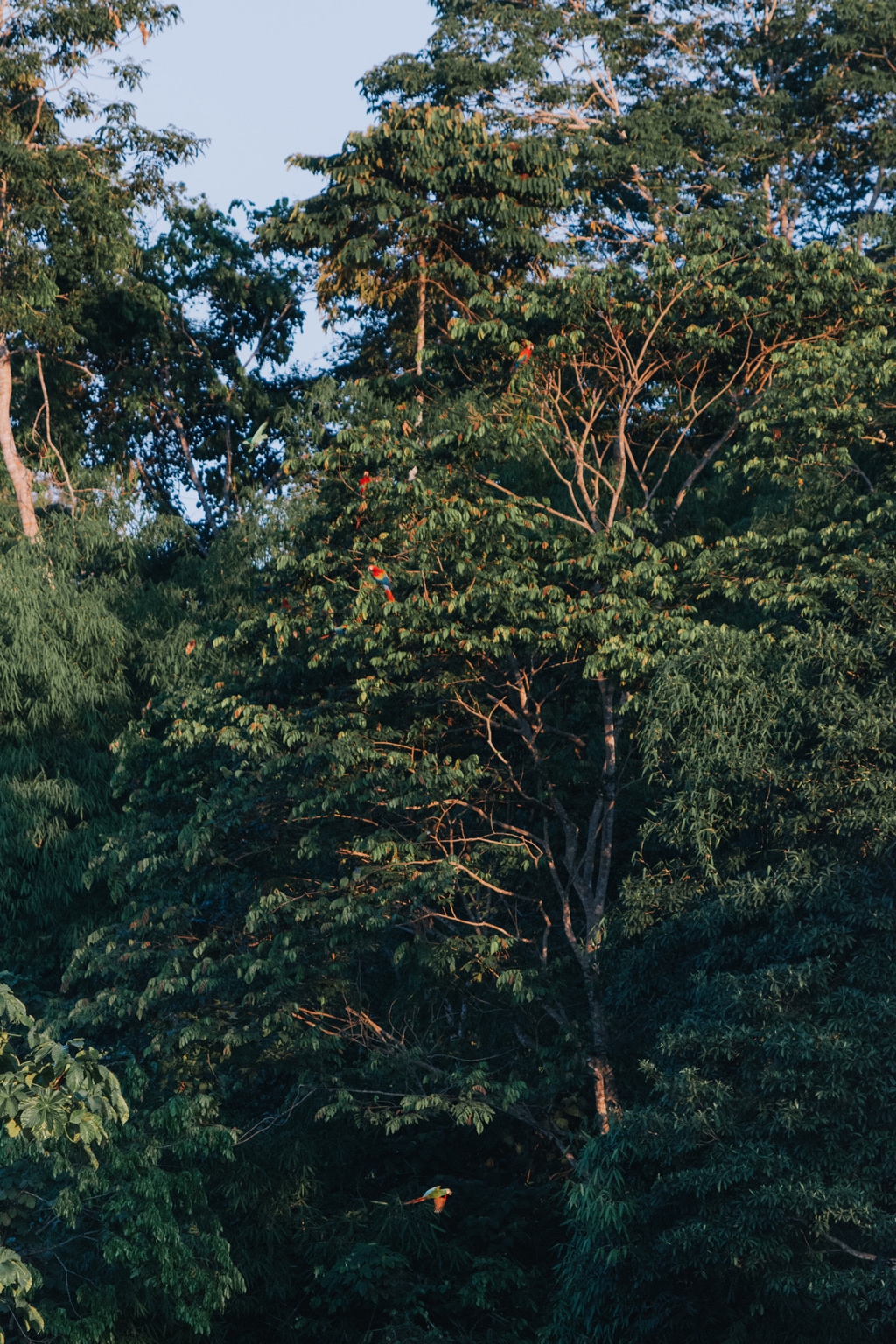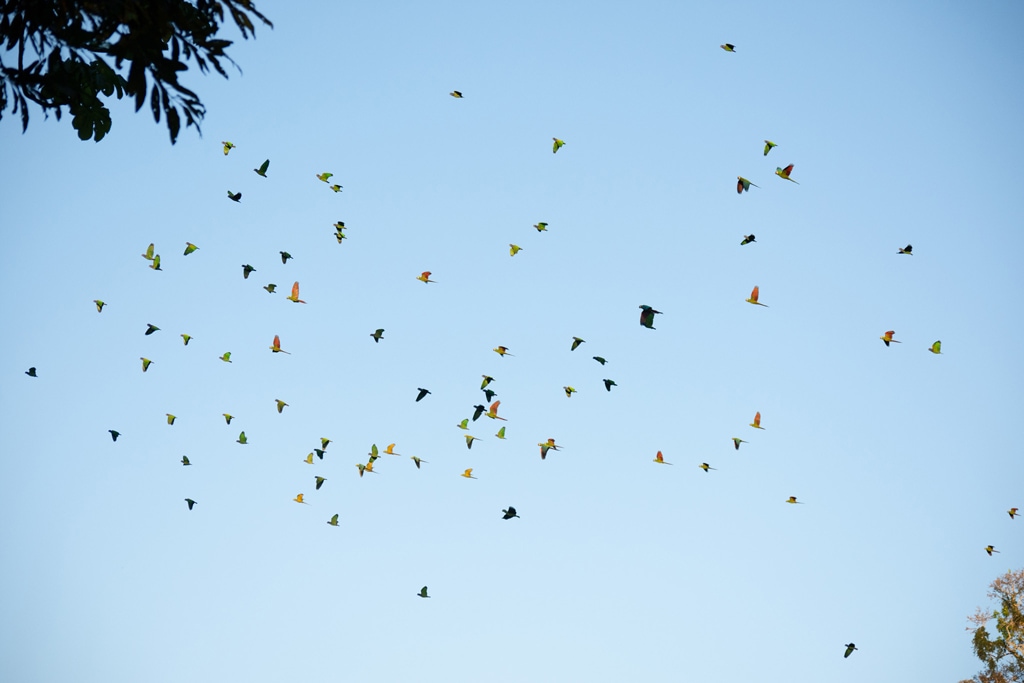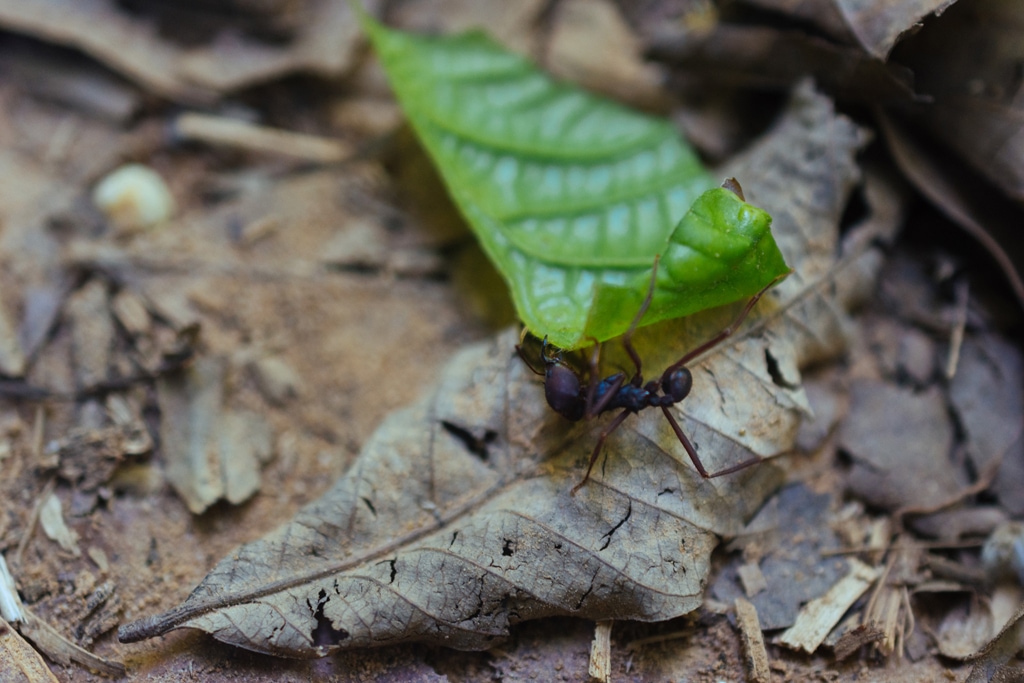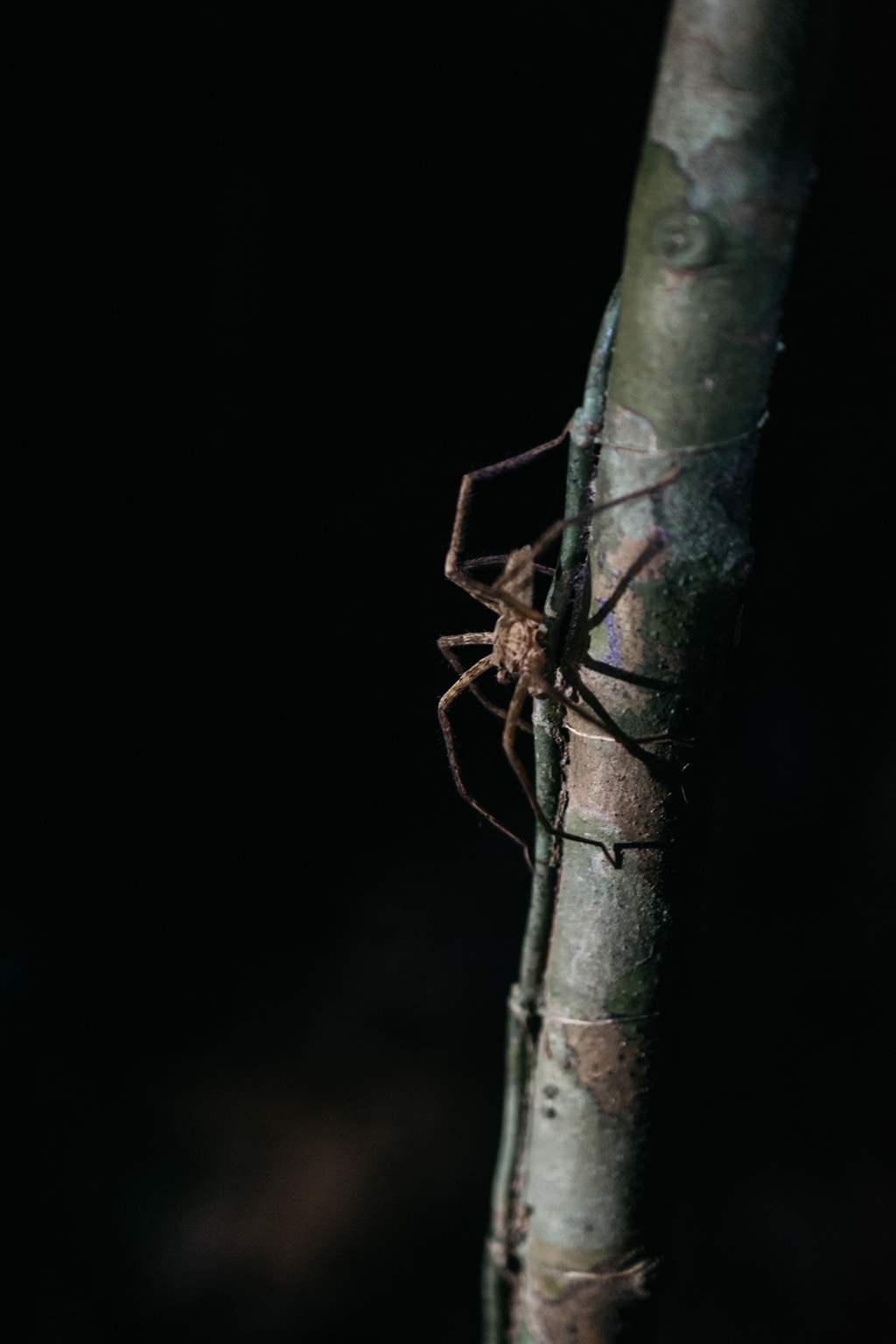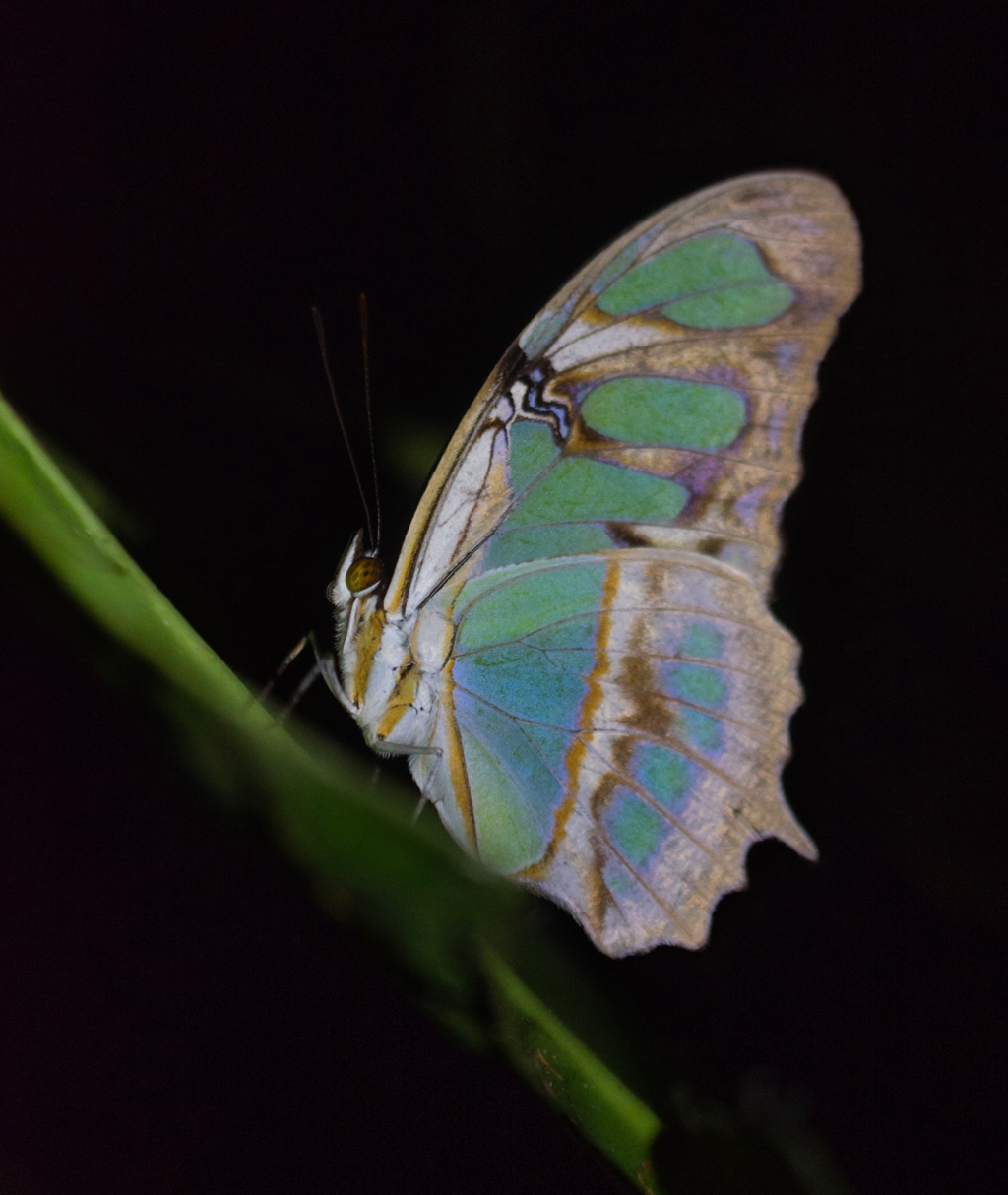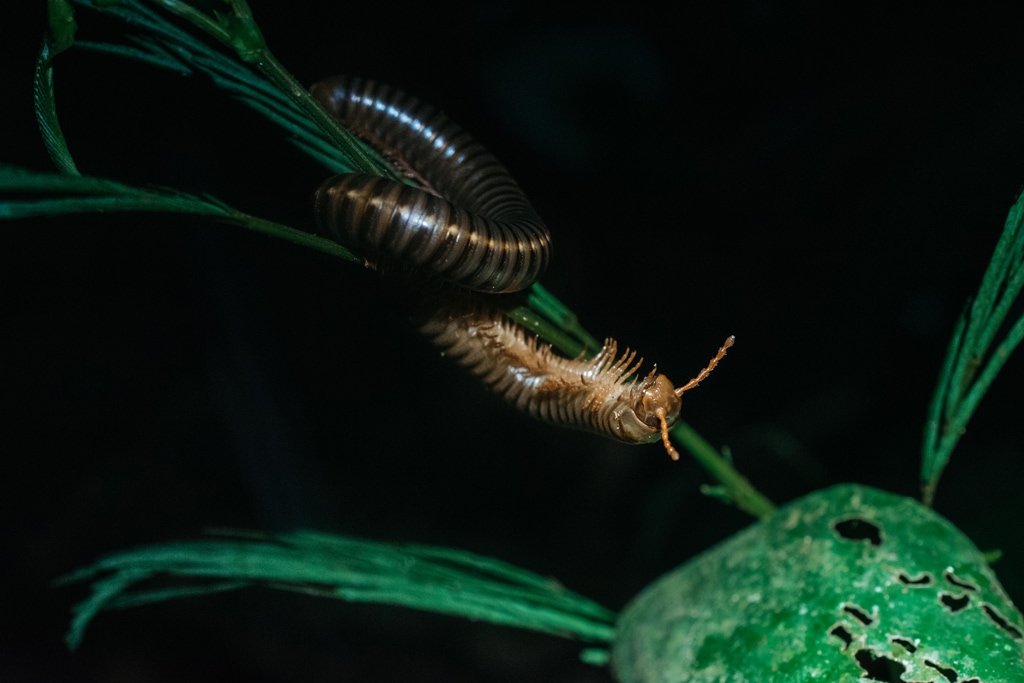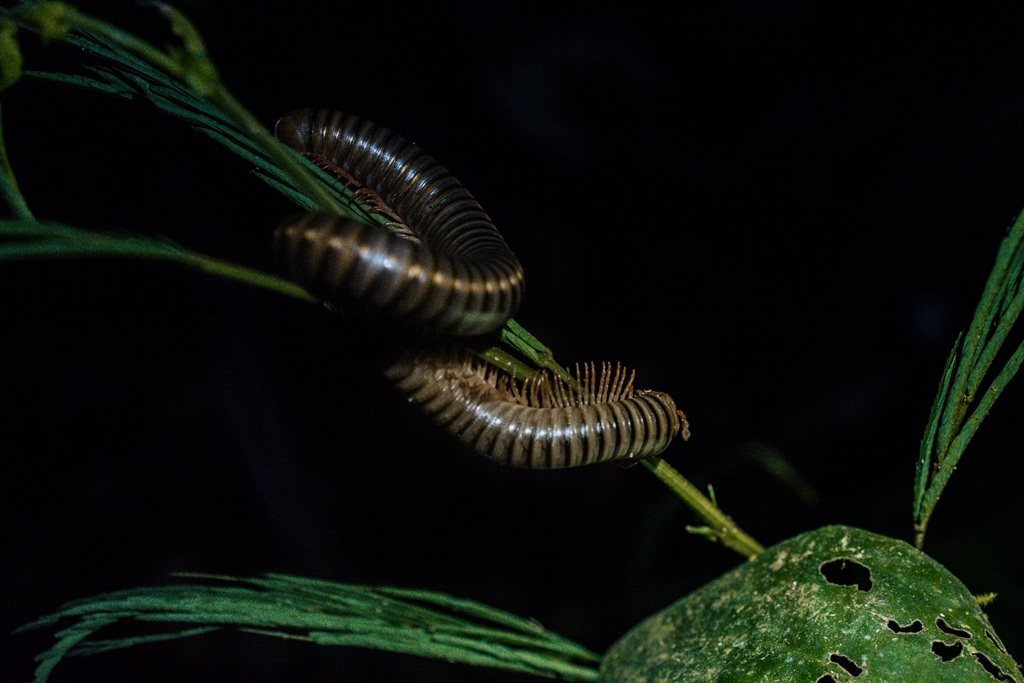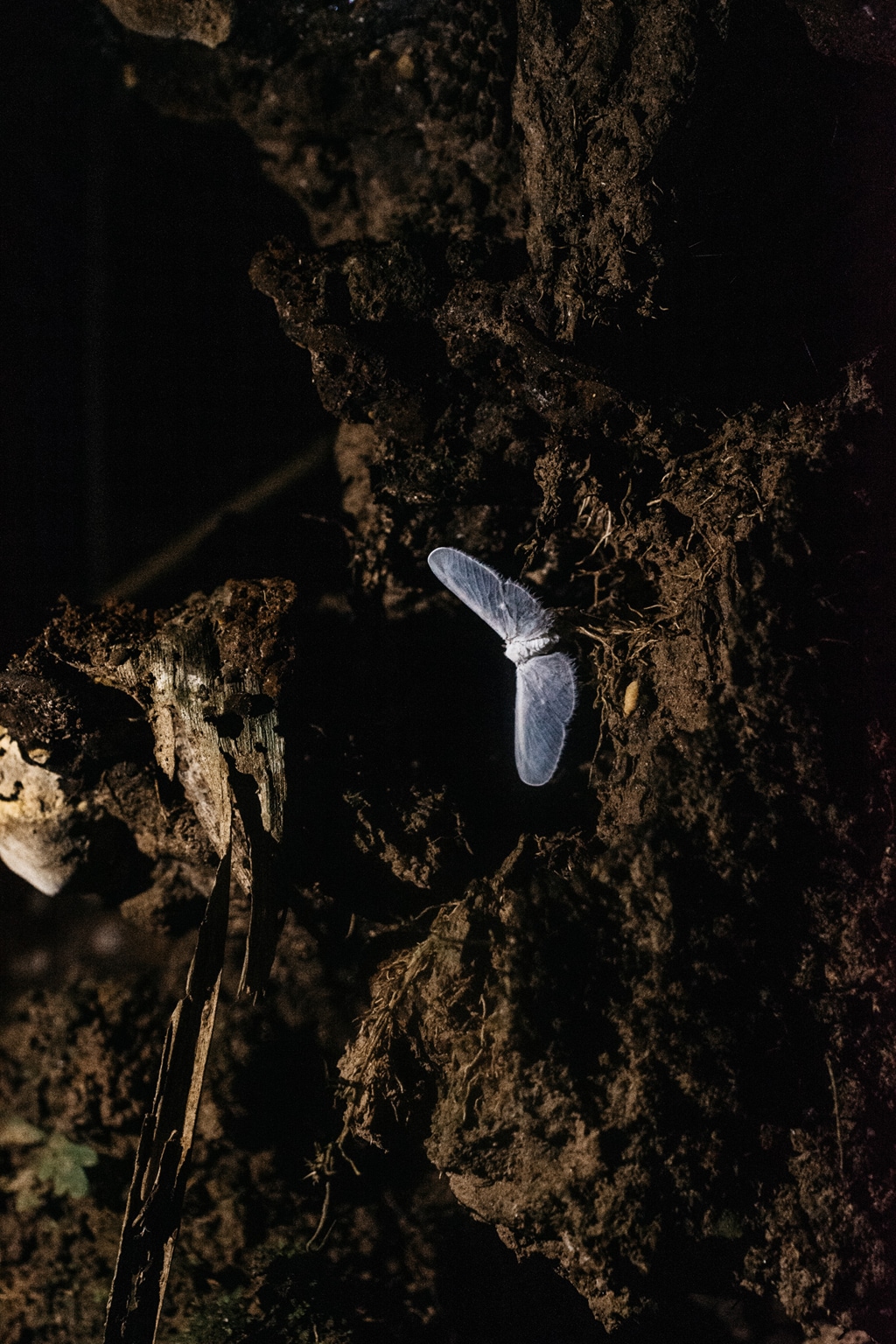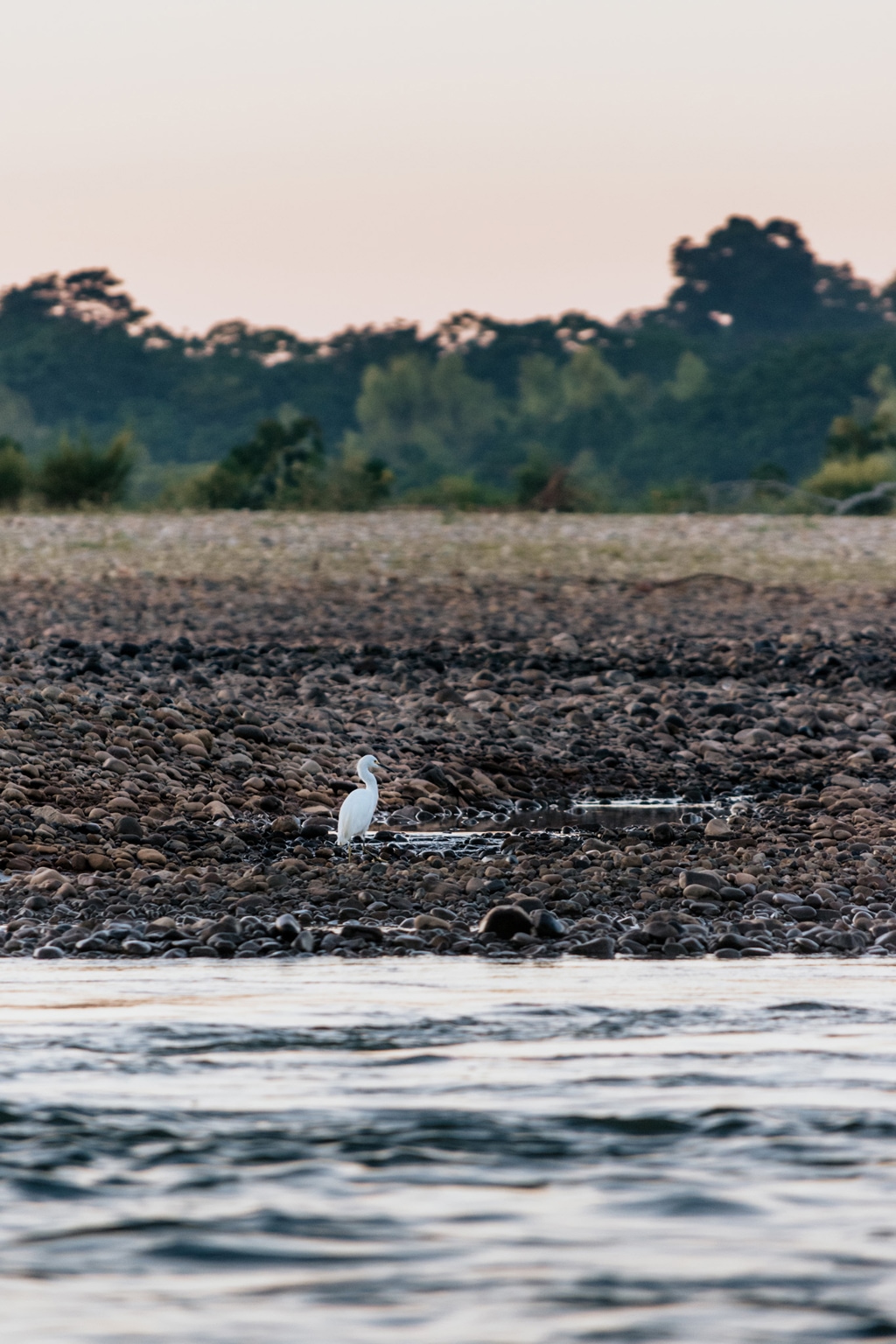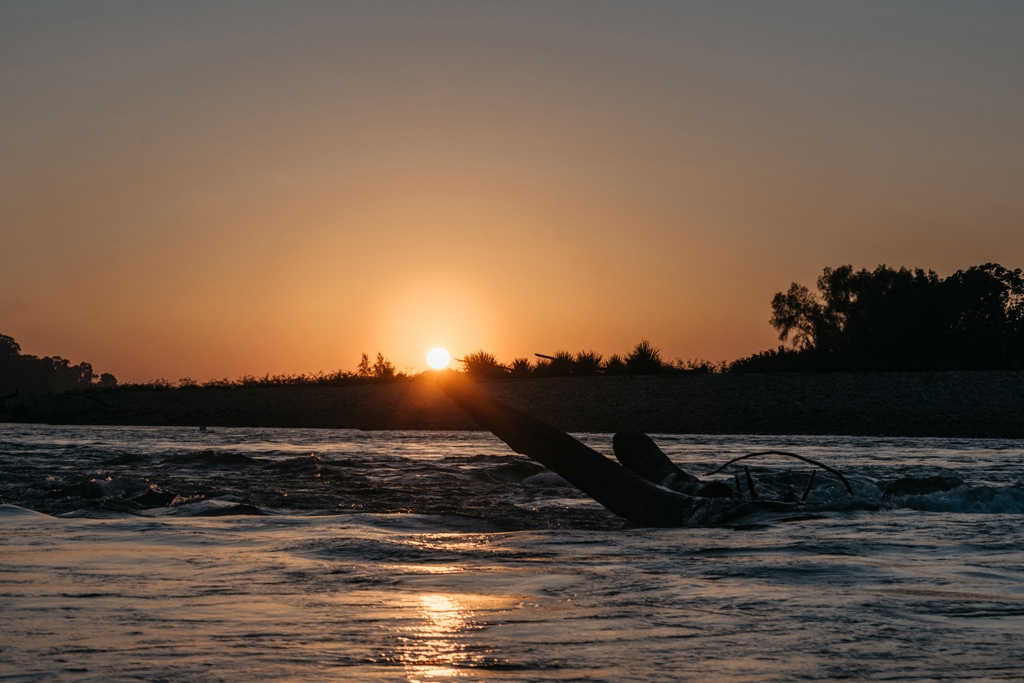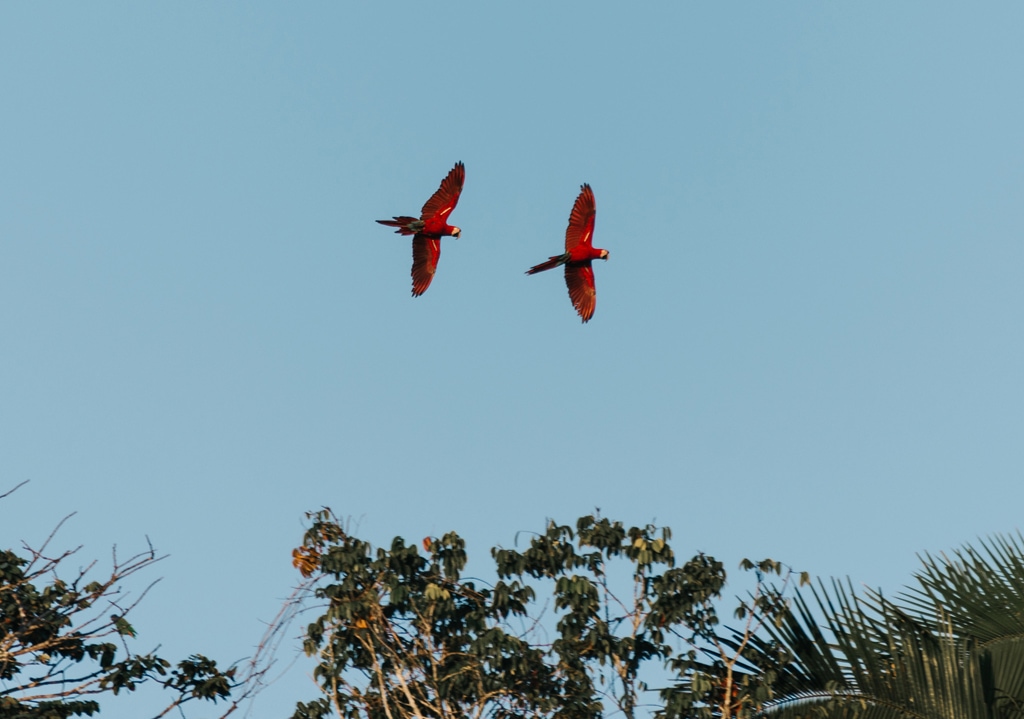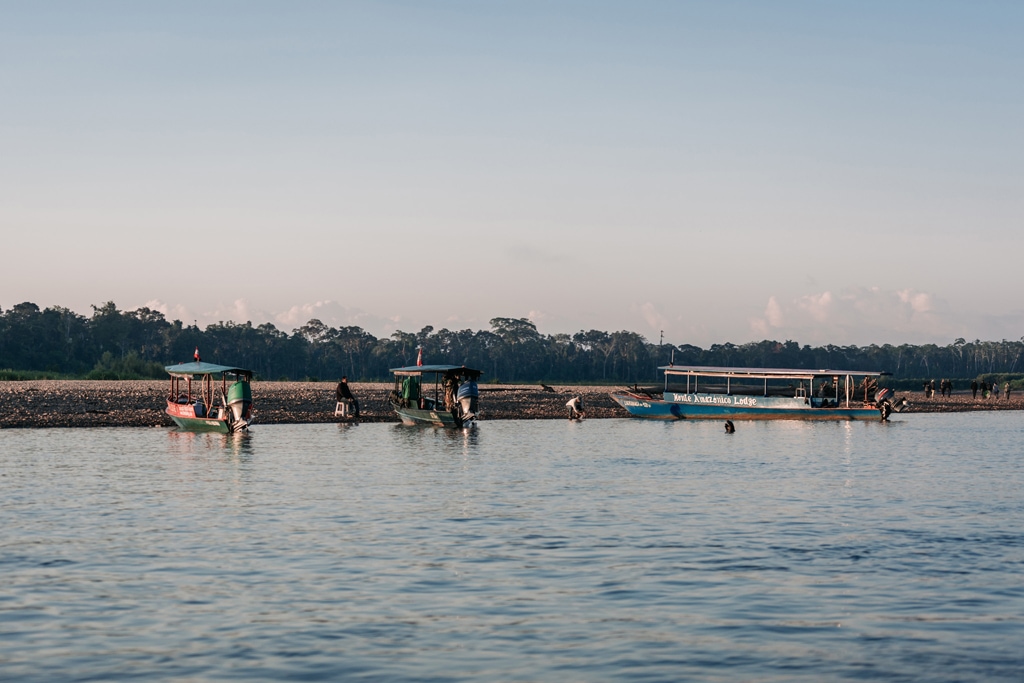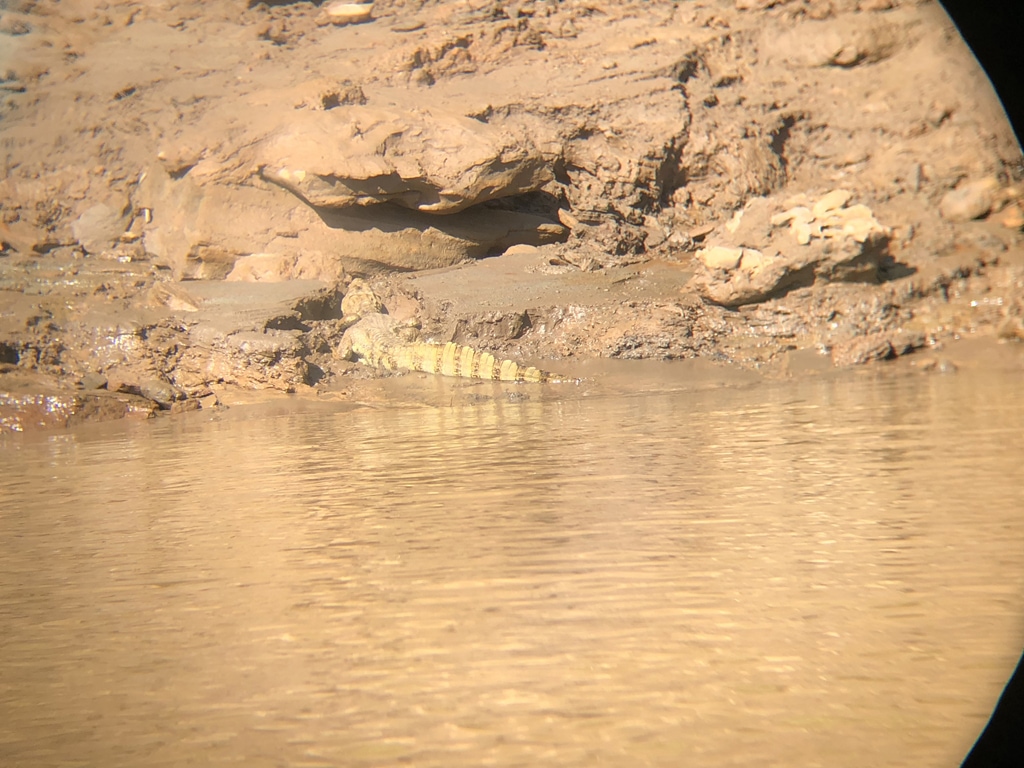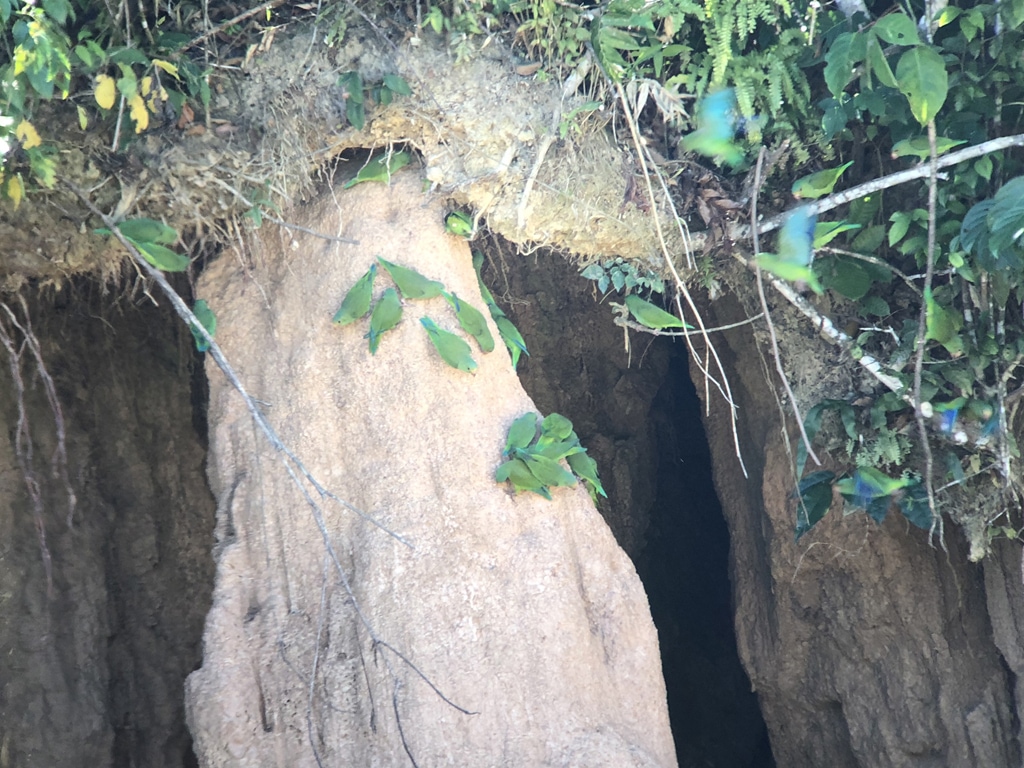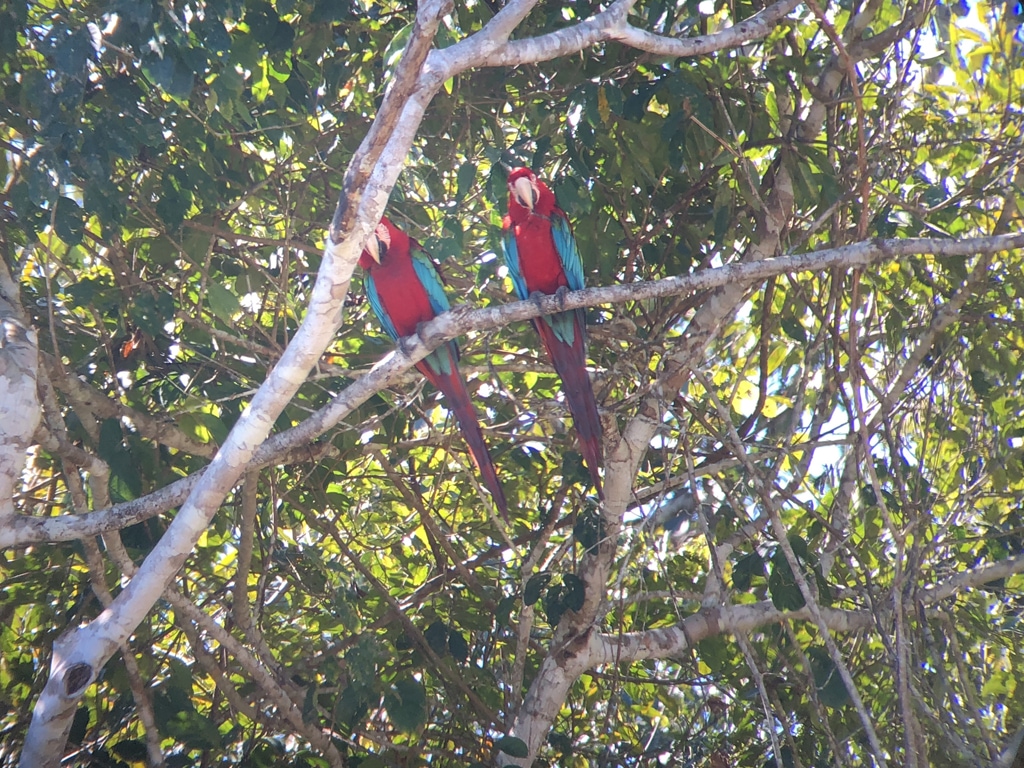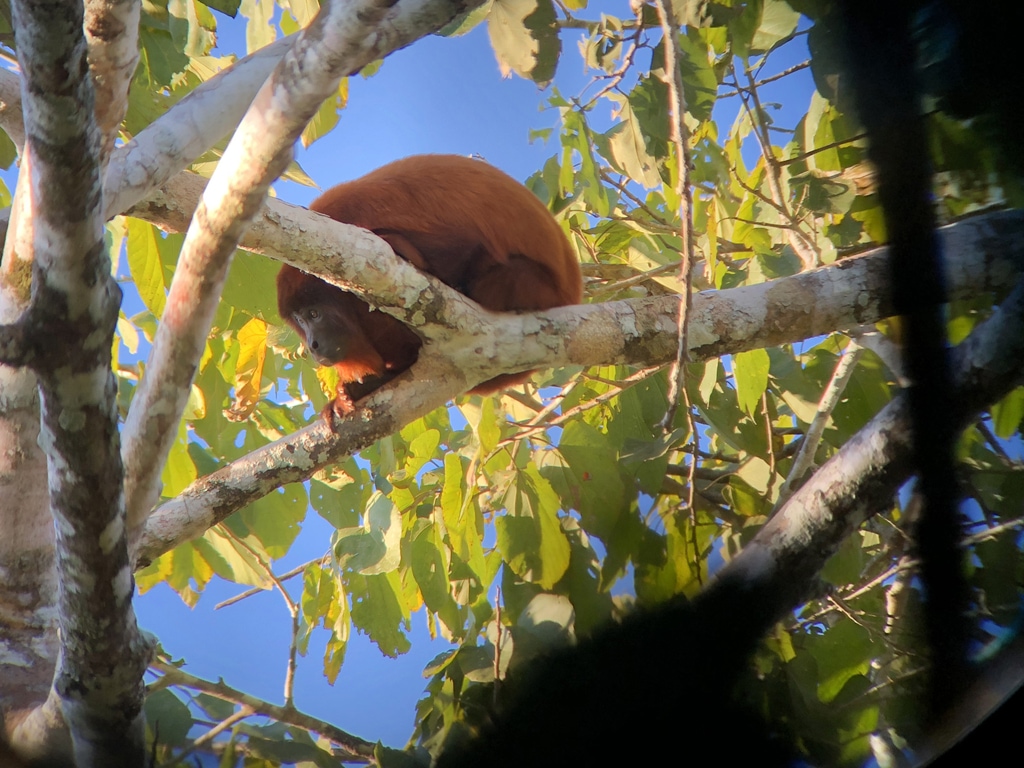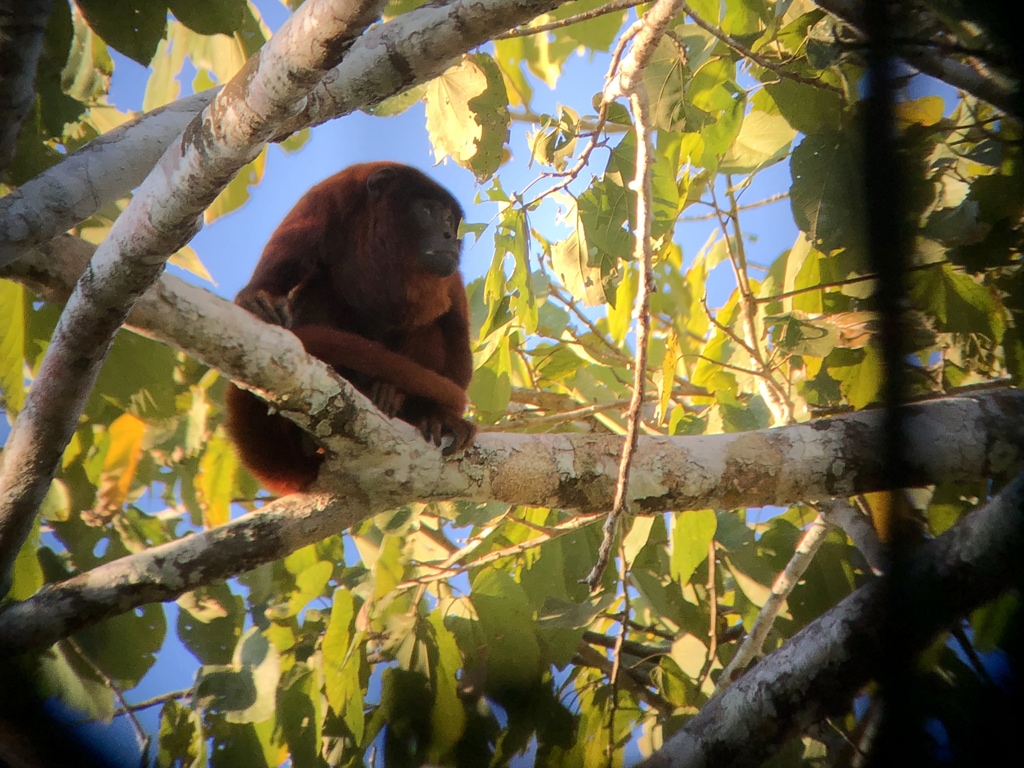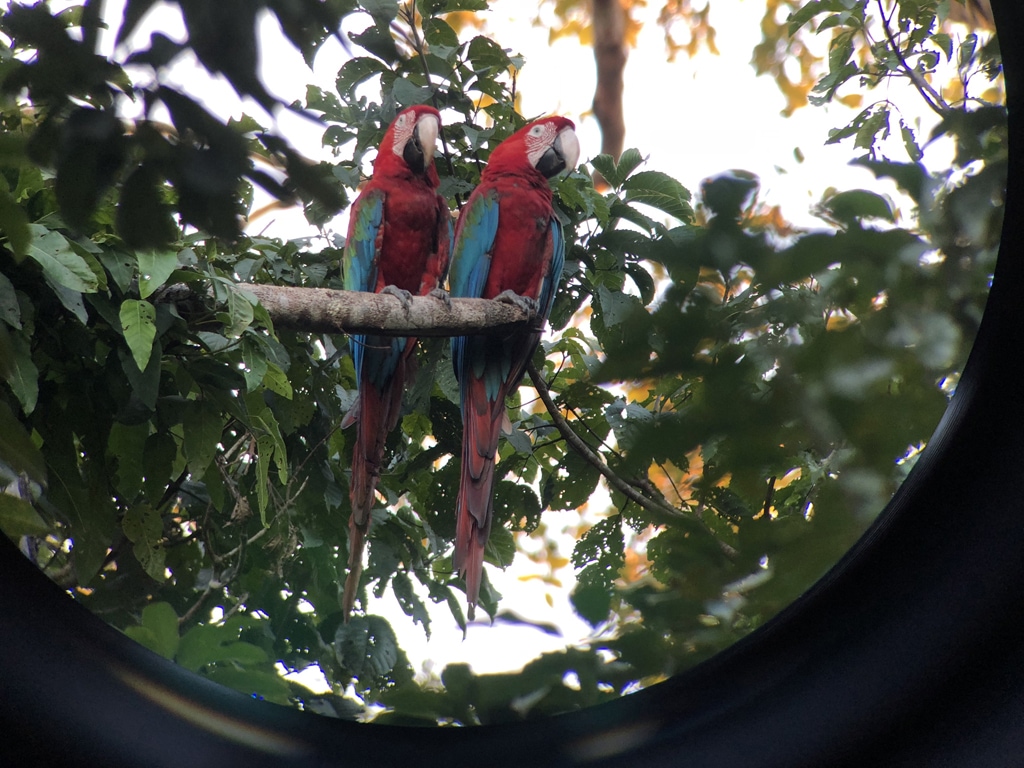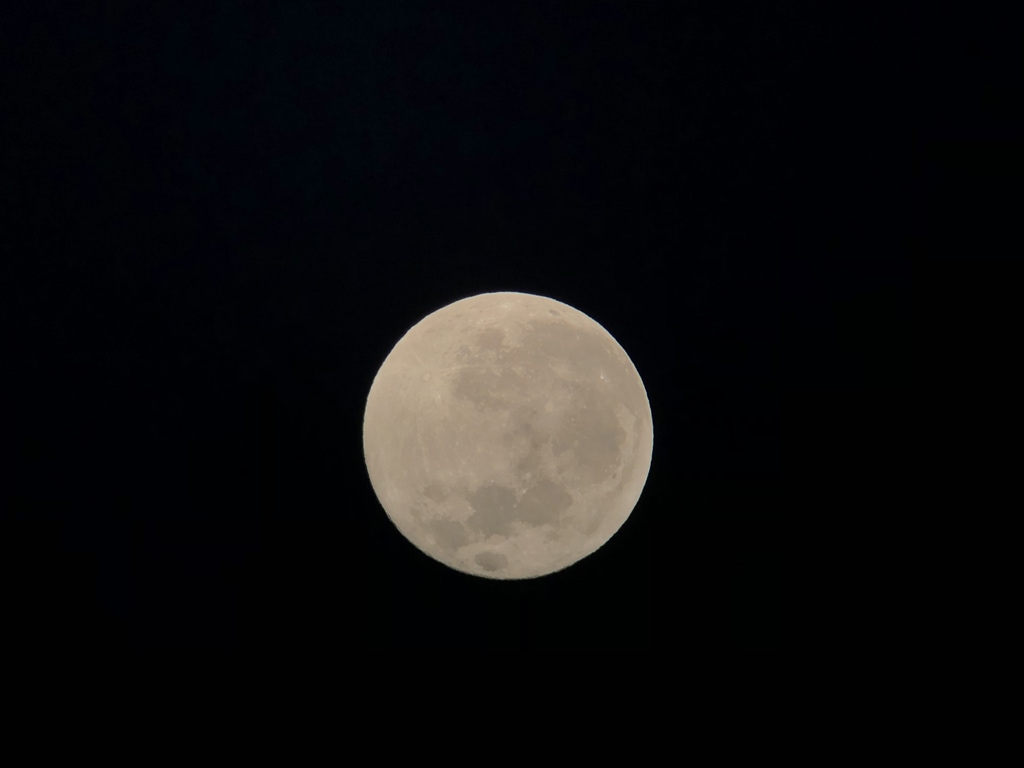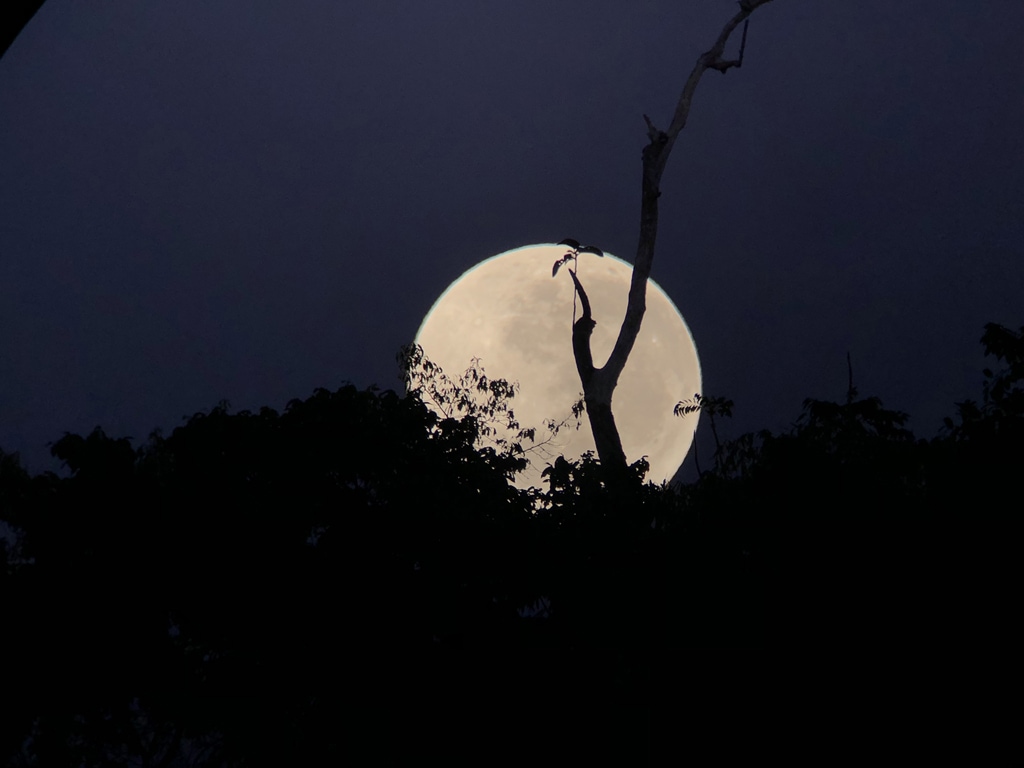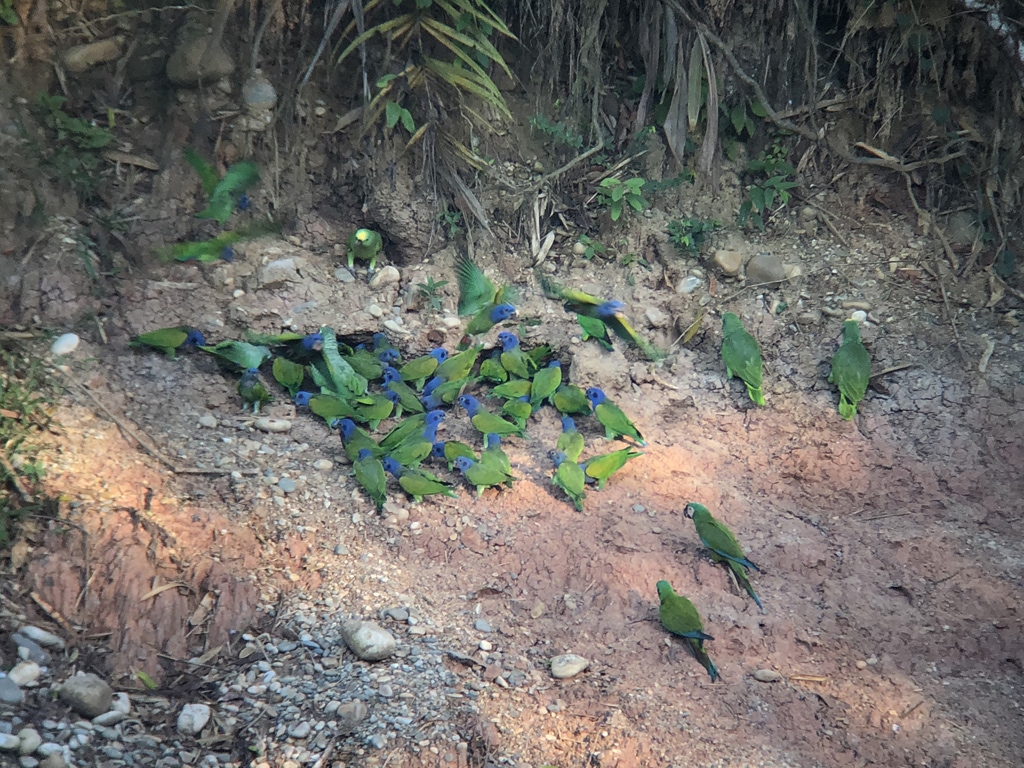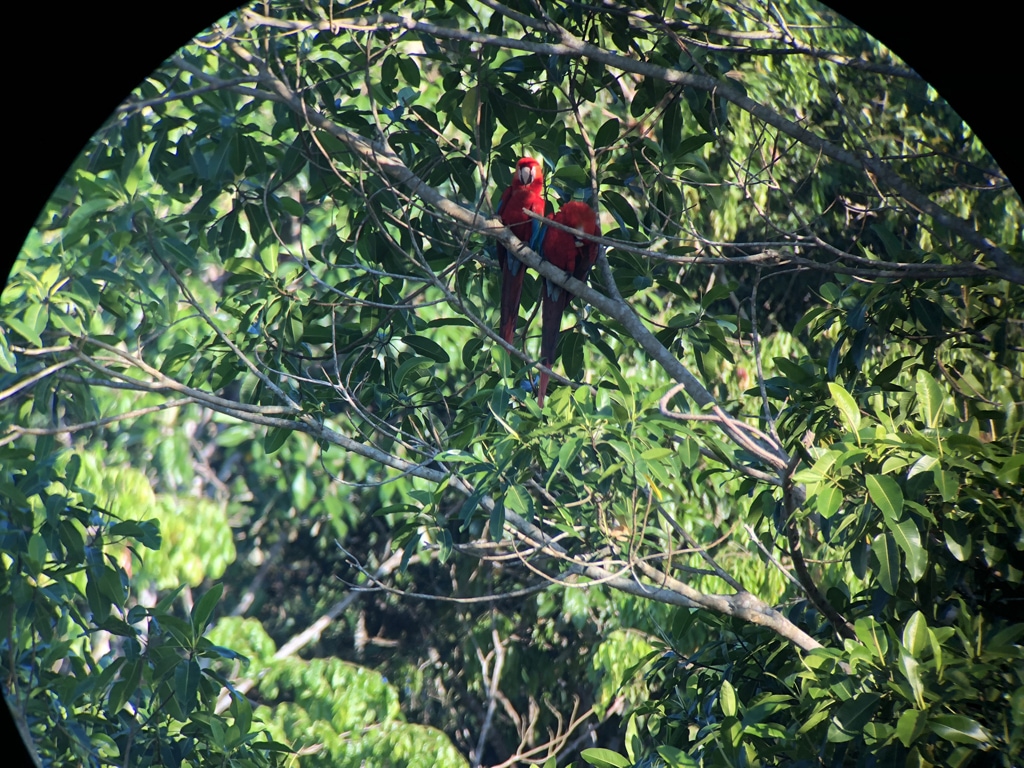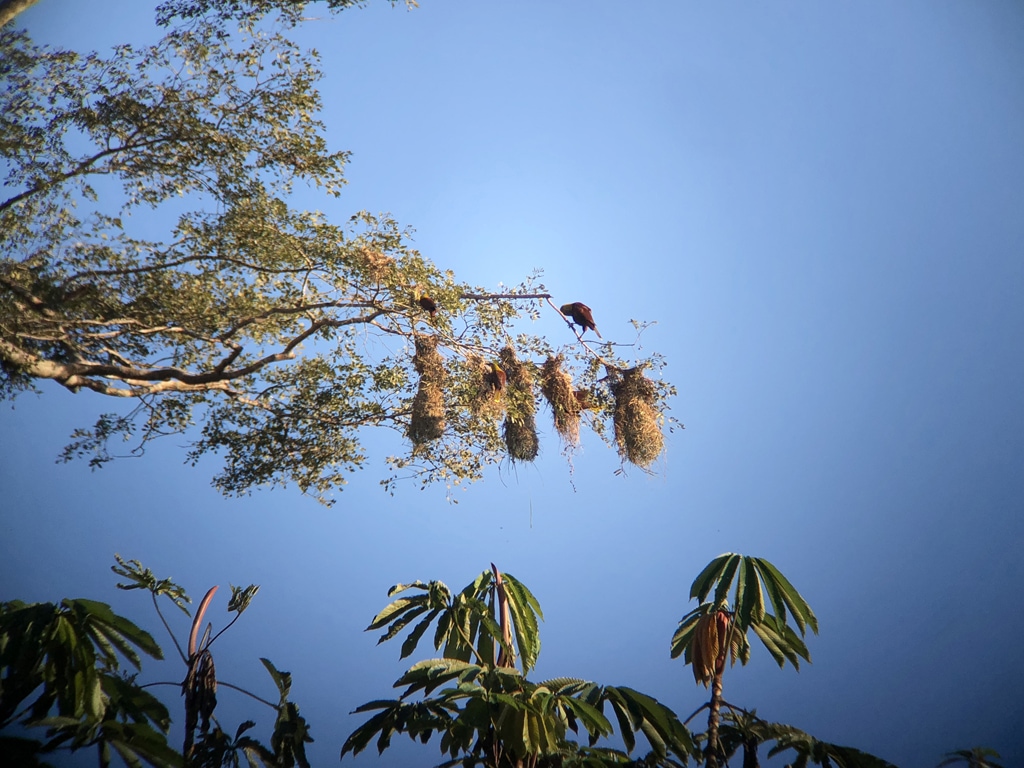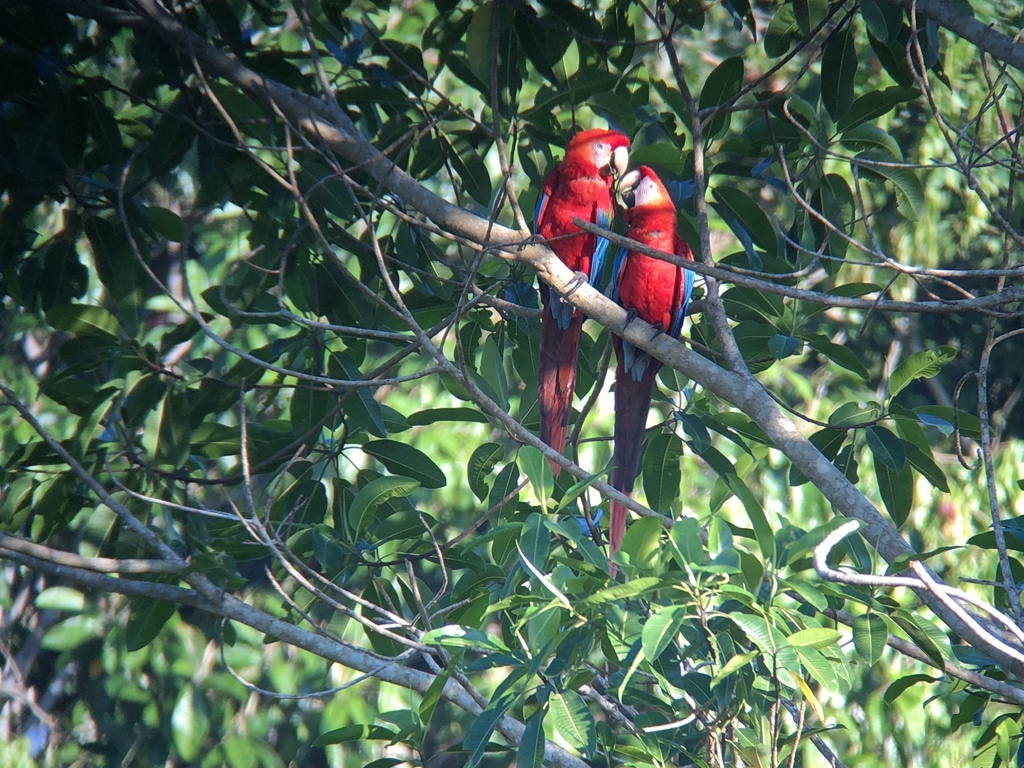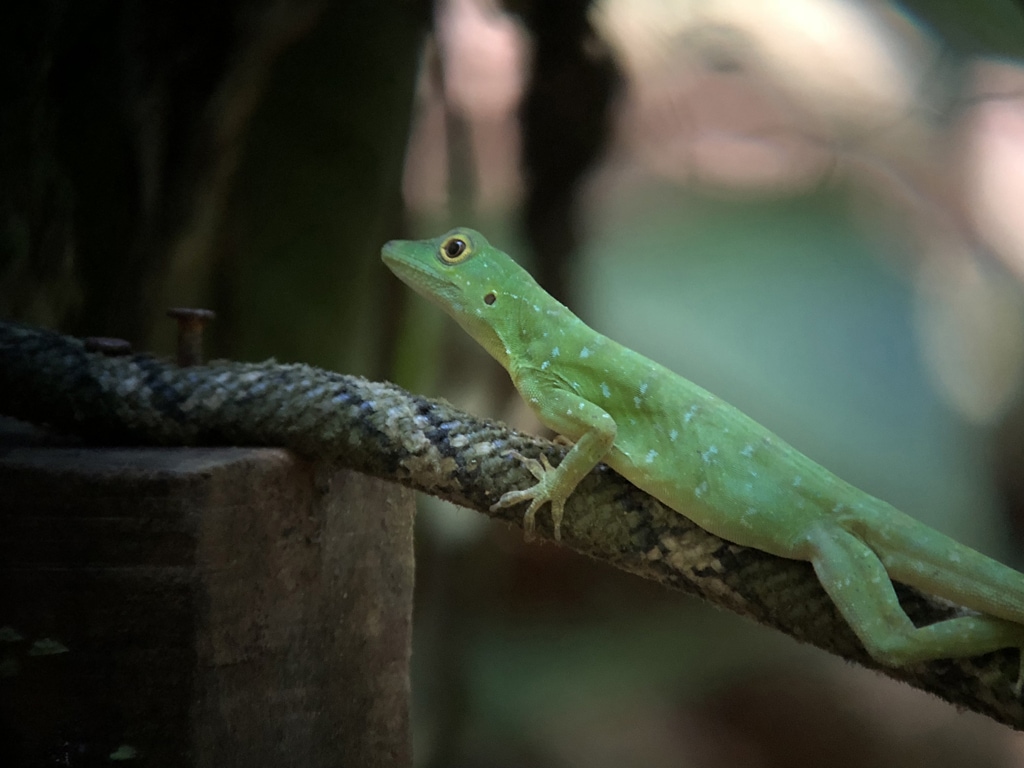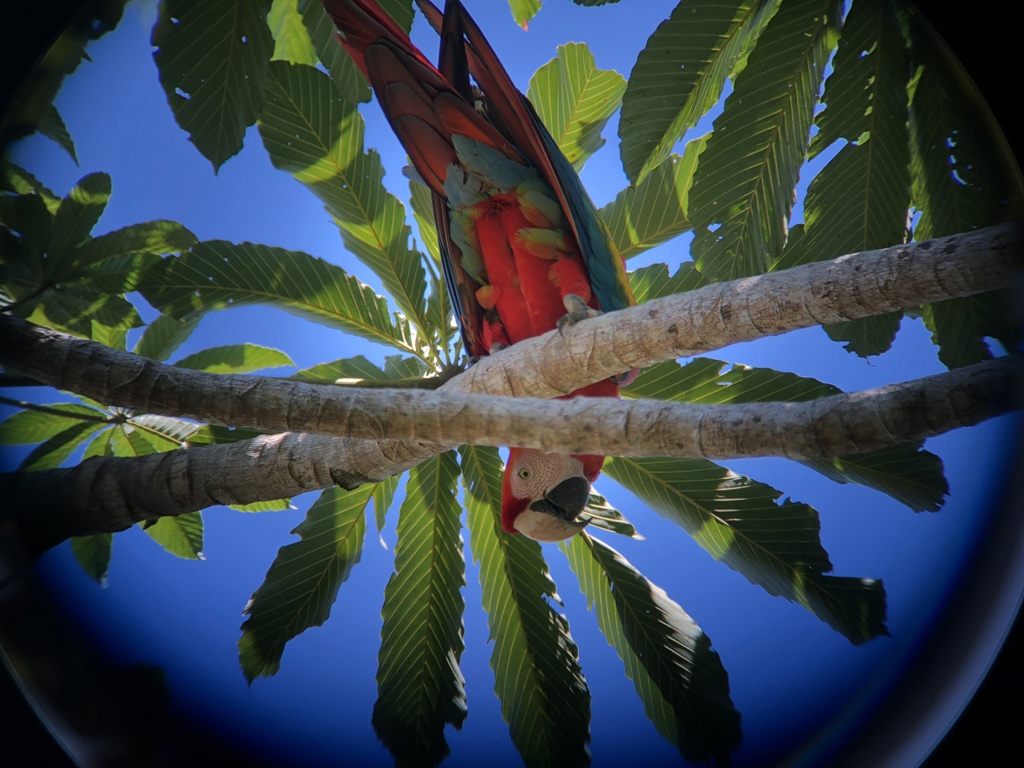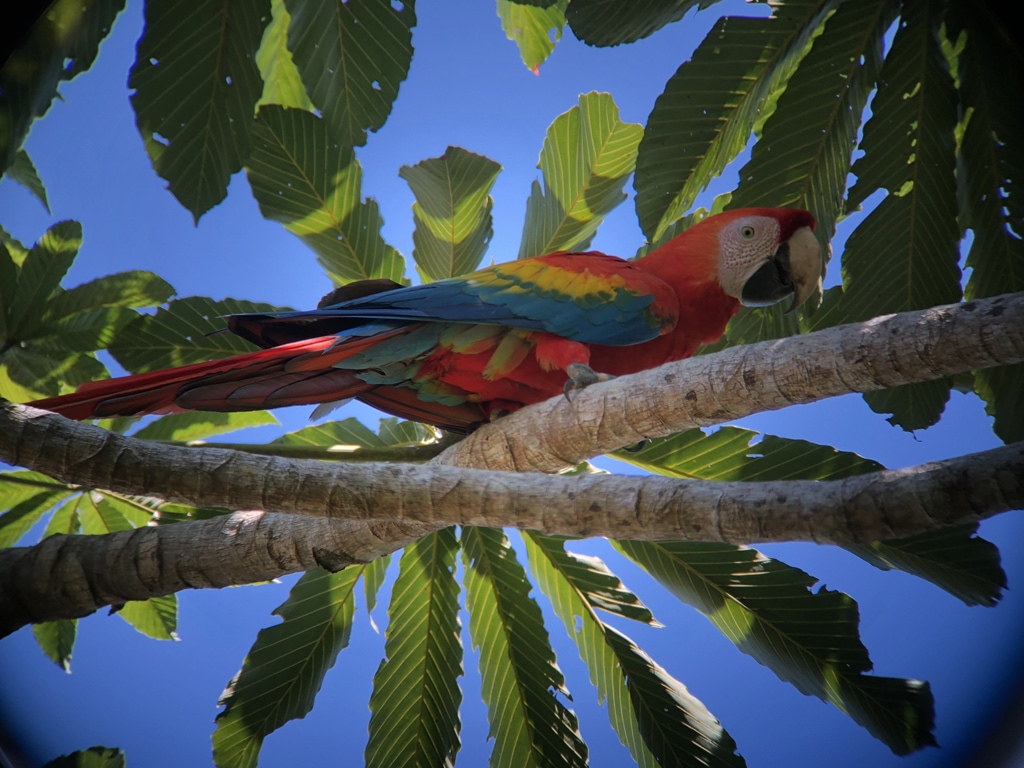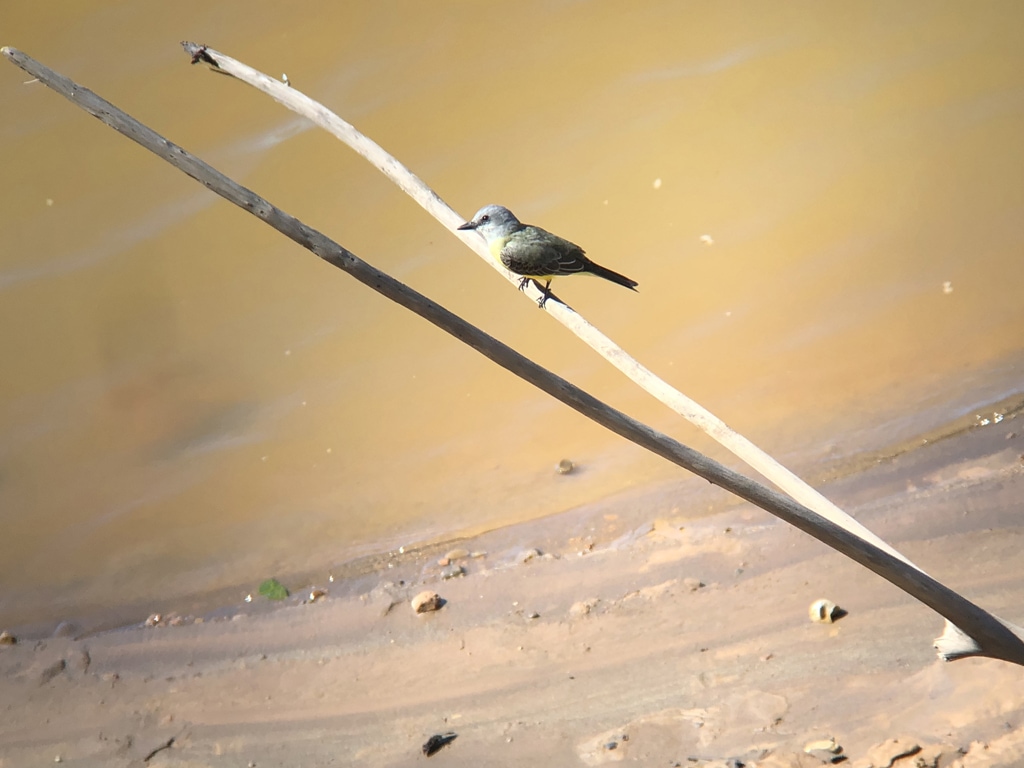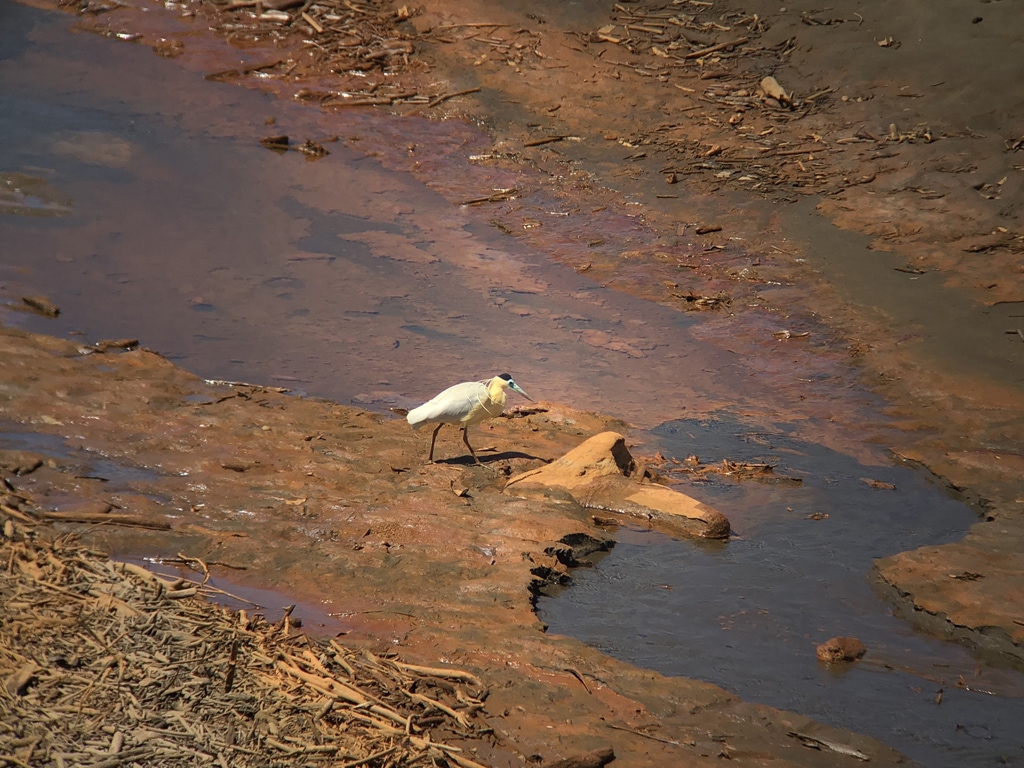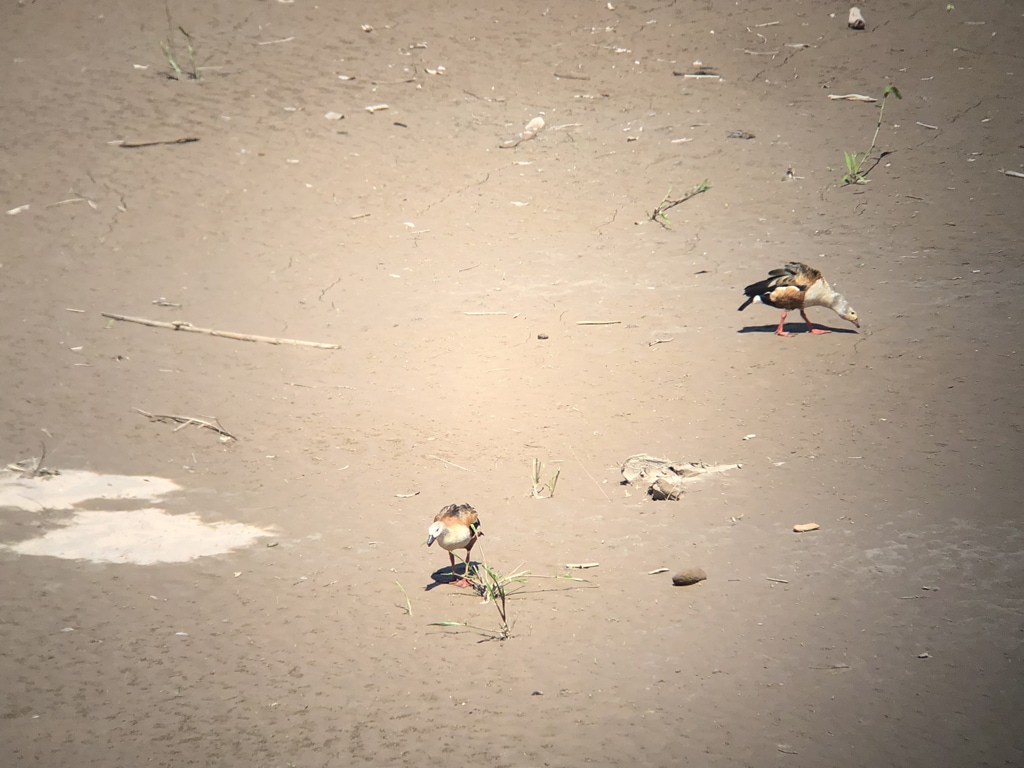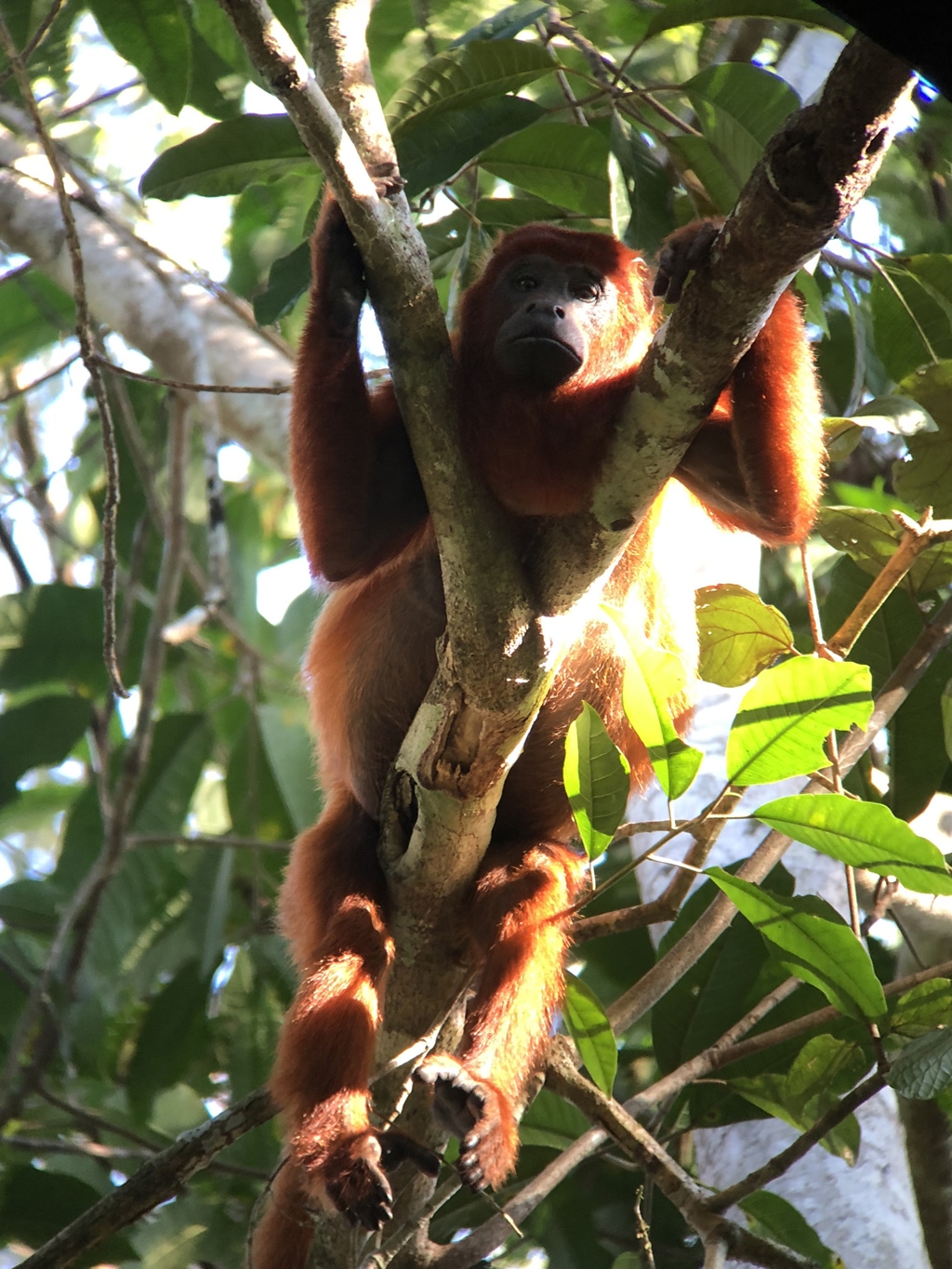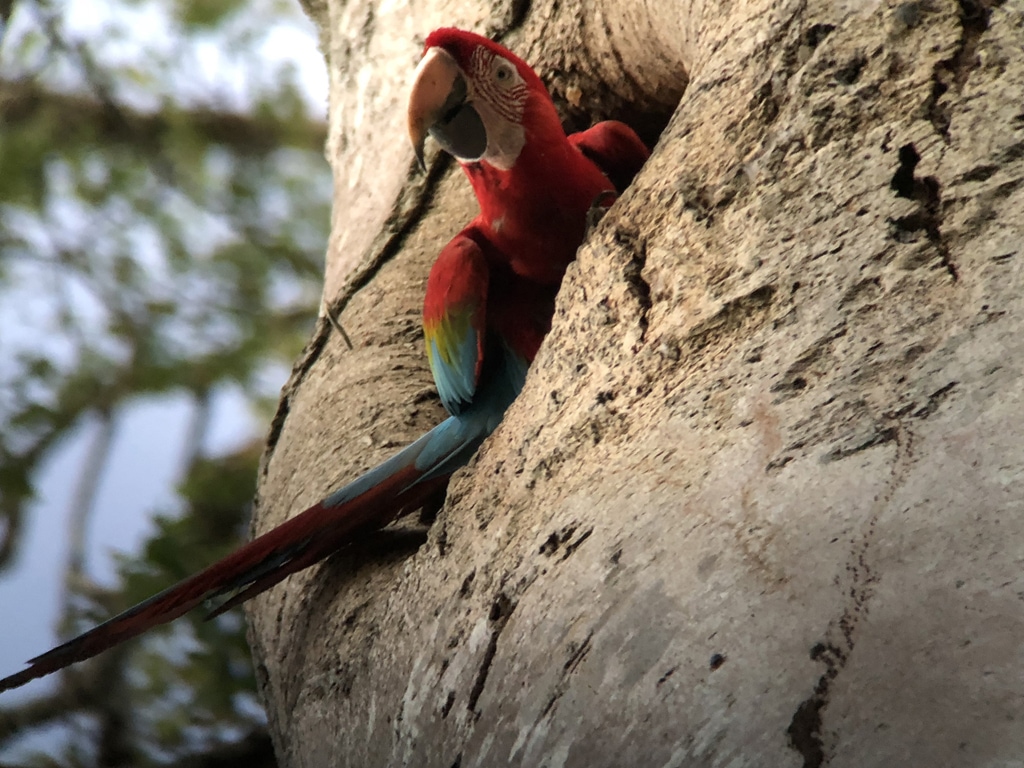Peru
Summer 2018
Day 6
During the flight from Cusco to Puerto Maldonado, I watched the snowy mountain ranges turn into the vast green landscape of the Amazon. The Tambopata River could be seen snaking through the jungle below.
Upon landing, we had to transfer our luggage to smaller duffel bags in order to bring them into the jungle. There is a weight limit for each traveler to the Tambopata Research Center, as the only way to reach the center is by boat. I learned that TRC is the only lodge in the national reserve that is protected by the government. Out of the trilogy of the lodges, Posada Amazonas and TRC are the best for viewing wildlife.
To get to the boat port, we drove for about an hour on a dirt path. The port wasn't actually far, but the road was full of deep potholes, causing the bus to drive at a walking pace. On the boat, our lunch was served in a banana leaf. Inside was fried rice, a fusion of Peruvian and Chinese cuisine. During the boat ride, we spotted a white caiman and some tortoises.
The boat ride was only an hour. From there, it was a twenty-minute hike to reach Posada Amazonas. We were greeted by our guide, Inés, who immediately took us to the canopy tower. The tower was a bare metal structure that stood 137 feet tall, supported by only four wires attached to distant trees. At least that’s what I was told, I couldn't verify it as much as I tried. As we climbed up the tower, we felt the entire structure swaying in the air.
At the top of the tower, we were rewarded with a breathtaking 360-degree view of the jungle that extended to the horizon. The sounds of birds and monkeys calling out to each other added to the atmosphere. Inés pointed out some different bird species, which we were able to see through the telescope she had set up. It was amazing to see the top of the forest from such a high vantage point over the trees.
We went back to the lodge where we found a station to crack Brazil nuts. We found a pile of nuts in their shells and cracked them all, eating them along the way. Dinner was served buffet-style in a large dining room. The food was great, but unfortunately it ran out.
Day 7
At 4 AM, we set out on a twenty-minute hike to a river port, where we boarded a small motorboat. As we set off, the sun began to rise, casting a warm, orange glow over the landscape. After an hour on the boat, we arrived at another lake port where we boarded a small catamaran.
For the entire morning, we went wildlife viewing along the river. There were many different birds in the trees and on the shores that we were able to see. Suddenly, our guide became very excited and told us to be quiet — she had spotted the river otters. There is only a single family of five otters that lives in the entire three-kilometer wide lake, and there they were, swimming right beside our boat. It was an incredible sight.
When we reached shore, we were given twigs with strings attached to them, which we used to fish for piranhas on the dock. I baited my hook with a small piece of meat and dropped my line into the water. I could feel the fish nibbling on the bait almost immediately. To catch a piranha, you have to wait for it to fully eat the bait and then give a strong tug on the line. Despite having my line in the water for 30 minutes, I was disappointed to not catch a single piranha, but felt I was close a couple of times.
After my unsuccessful attempt at piranha fishing, we embarked on the six-hour journey to the Tambopata Research Center. Our lunch of chicken, plantains, and sweet potatoes was again served in a banana leaf. During the boat ride, we continued to spot various wildlife. The river also had small rapids and many large obstacles. Because it was the dry season, the water was extremely shallow, so we could sometimes feel the boat scraping across the rocks on the bottom of the river.
An hour before reaching TRC, we visited a clay lick where thousands of parrots and macaws were feeding along the cliff side. It was incredible to see them in the wild, eating clay. We were lucky to see this at 1 PM, as the birds typically leave the area around midday.
Upon arriving at TRC, we immediately set out on a monkey walk. We hiked through the dense jungle off-trail, and spotted various howler monkeys, spider monkeys, and toucans. The dense forest made it feel as if we were exploring an area where no human had been before.
We then had the same style of dinner that we had at Posada Amazonas. In the common area, a researcher from TRC gave a presentation on her work with macaws and what she has learned about the birds. It was a great presentation and provided a lot of context about the birds that we were seeing in the wild.
Day 8
It was another early morning, and we set out at 4:30 AM to see the Chuncho Macaw Clay Lick during sunrise. We arrived before any birds and enjoyed cake and coca tea for breakfast. Slowly, parakeets, parrots, and macaws began to arrive and start their meal. Occasionally, a large bird would fly over and startle all the macaws, causing them to scatter before warily coming back. It was amusing to watch, as it seemed as if the birds were in their own flock.
Our next activity was the bamboo walk, where we walked through a section of the jungle that was overrun by bamboo. At the end of the trail, there was a beautiful viewpoint overlooking the Tambopata river, which was partly dry. Along the dried islands in the middle of the river, we were able to see many different kinds of birds through a telescope. I also found a lot of different kinds of ants, such as cone ants and leaf cutter ants.
Leading up to the viewpoint, we could see a huge trail of leaves that the leaf cutter ants had abandoned. It was a magical sight, as if someone had left it there intentionally. The contrast of the dense trail against the ground was mesmerizing.
In the afternoon, we went on the Palm Swamp hike. We had to wear long rubber boots that reached our knees, as the trail was expected to be very wet and muddy. In some places, our feet would sink all the way down into the mud. As we hiked, we spotted more monkeys, macaws, and leaf cutter ants. We followed the ants and found the entrance to their colony, which looked like huge mounds of hardened soil.
By the time we were heading back to the lodge, we had to use our headlamps to light our way. This attracted many different bugs, which kept flying into my face as I tried to make my way through the dense foliage. In the middle of the trail, we found a giant tarantula.
After our dinner of chicken and rice, we went on a night hike. This wasn't so much about spotting wildlife as it was about finding cool spiders and insects. It was interesting to see what kind of creatures emerged at night that hid during the day.
Day 9
Today was the day we headed back home. We woke up at 4:50 AM and left by 5:15 AM. As we walked to the river, we noticed that the water was warmer than the air, causing steam to rise from the surface. This created the illusion of a thin layer of fog above the water, making for a beautiful sight against the rising sun. After returning, we repacked our main luggage and spent the afternoon at Burgos's Restaurant, the only tourist-friendly restaurant in the city.
As the sun set during our flight back to Lima, I couldn't help but admire the brilliant colors that filled the sky. The clouds, tinged a soft shade of red and pink, stretched out in a uniform layer, resembling a vast ocean of clouds. The peaks of the mountains peaked out through the clouds. Even though it was dark by the time we arrived, the clouds still glowed with the soft orange light of the streetlights below, making it feel like a never-ending sunset.
In our last hours in Peru, we visited the Museo Larco, which had an impressive collection of artifacts. Because we went so late, we were the only ones in the museum and got a private tour from a guide who was incredibly passionate about the history of the artifacts on display. It was fascinating to learn about the cultures and beliefs of people from different eras. For dinner, we went to the Café del Museo Larco, where we learned about the preparations for the delicious Chicha Morada.

